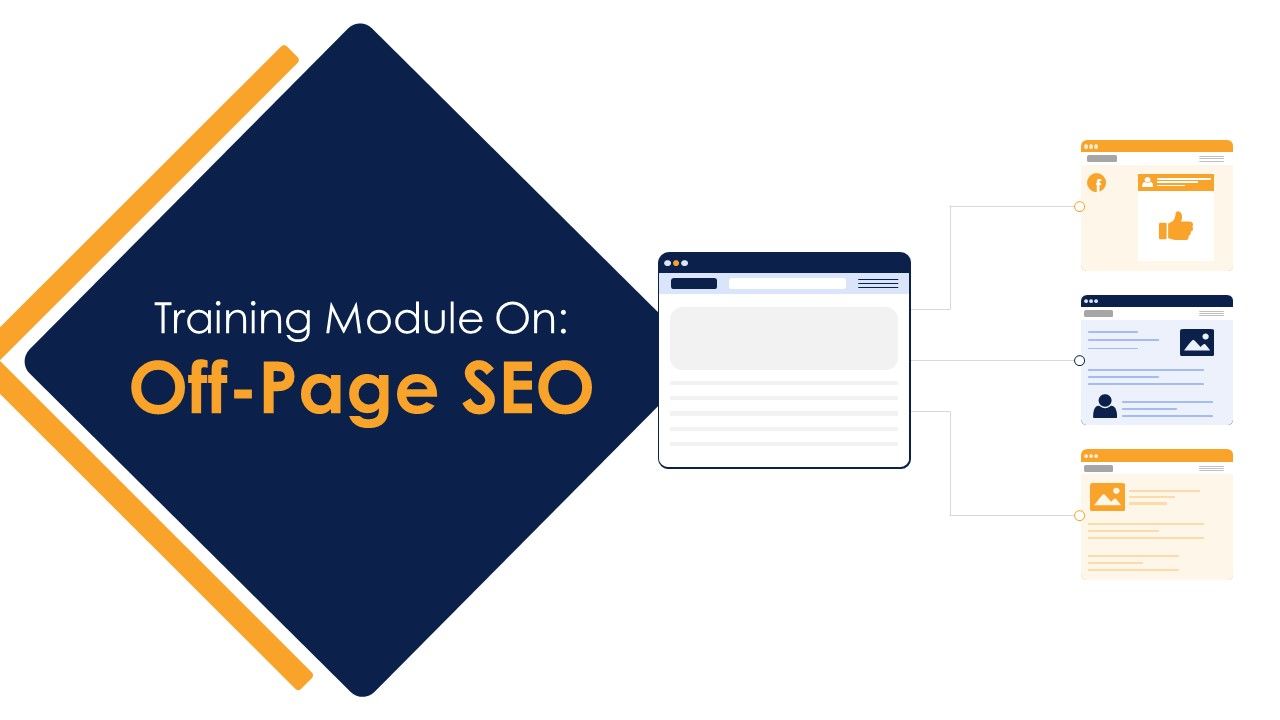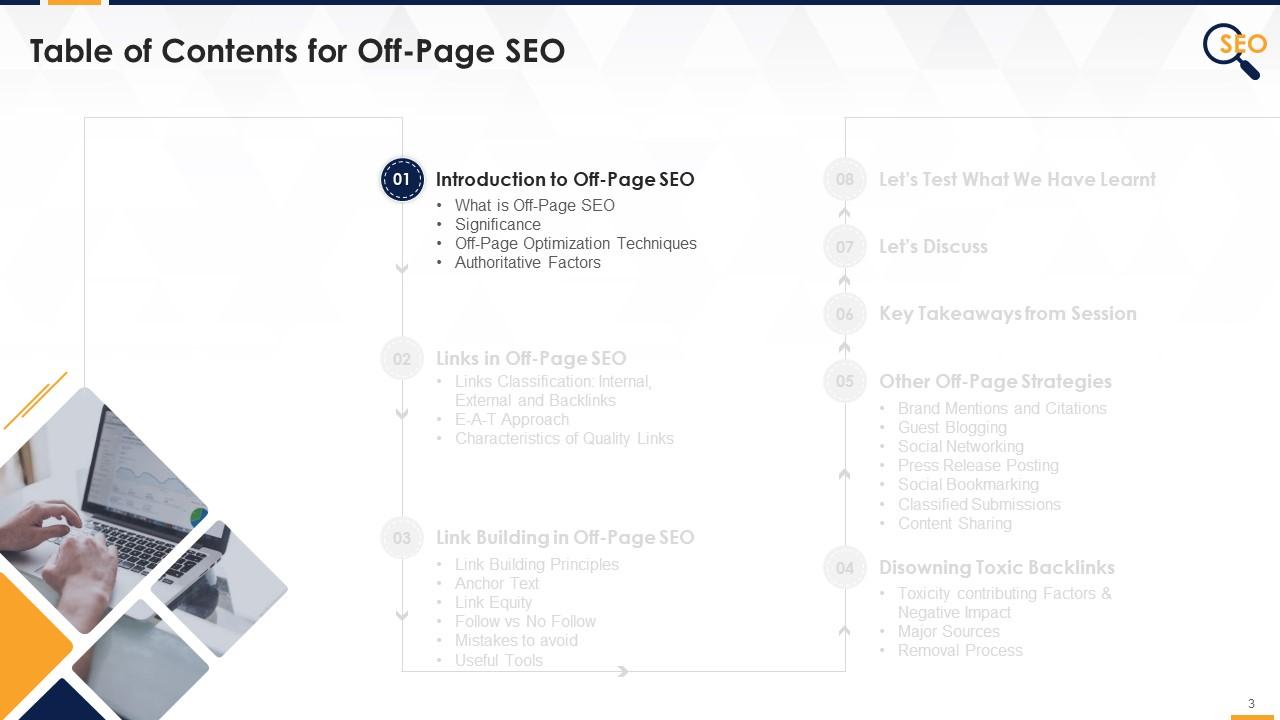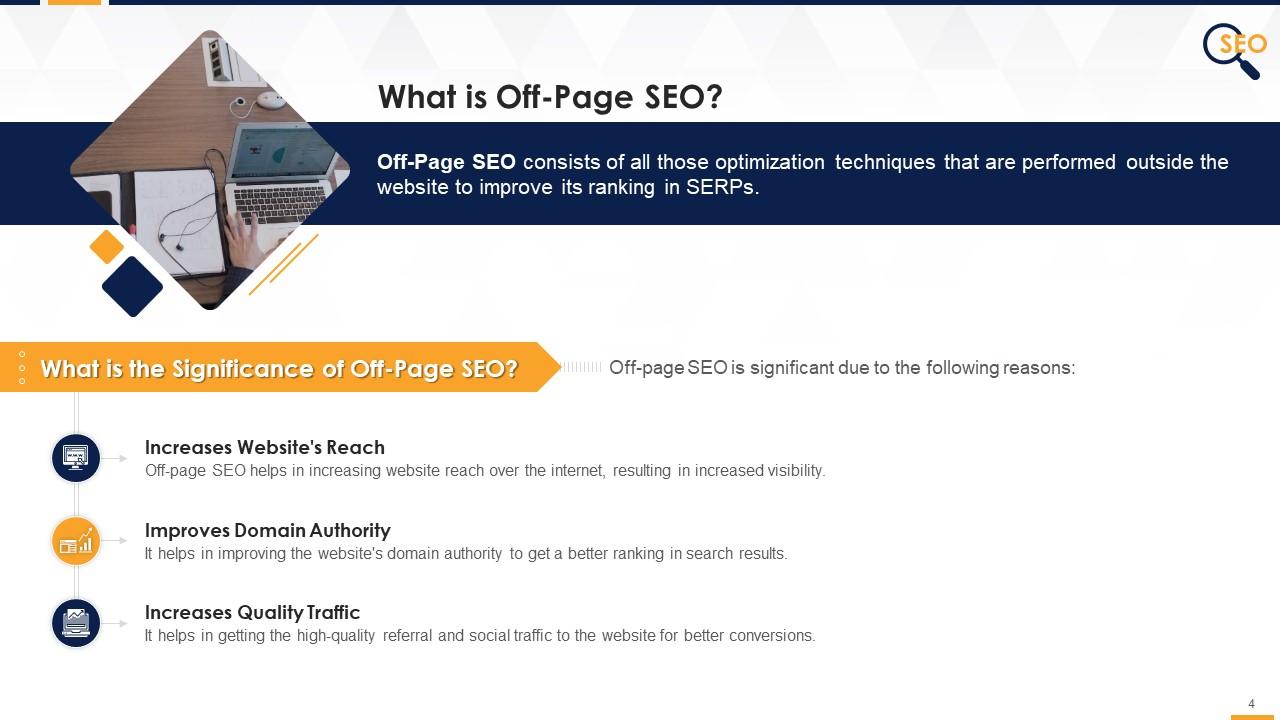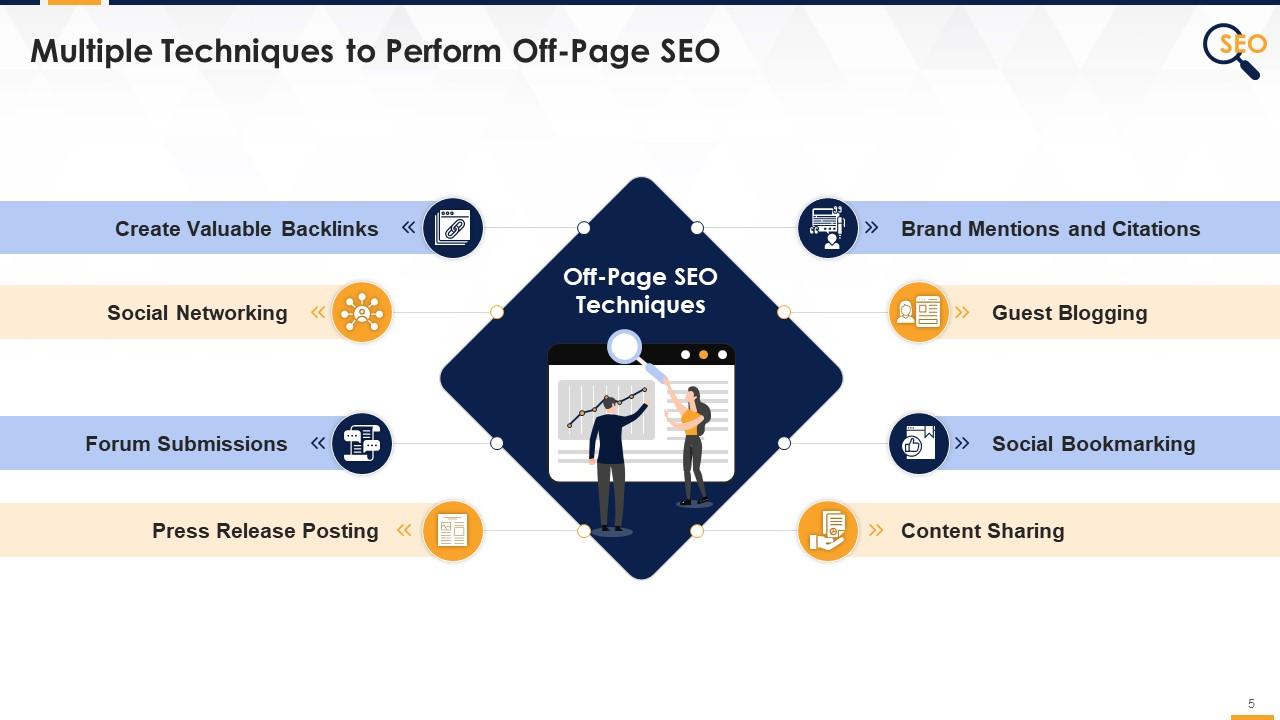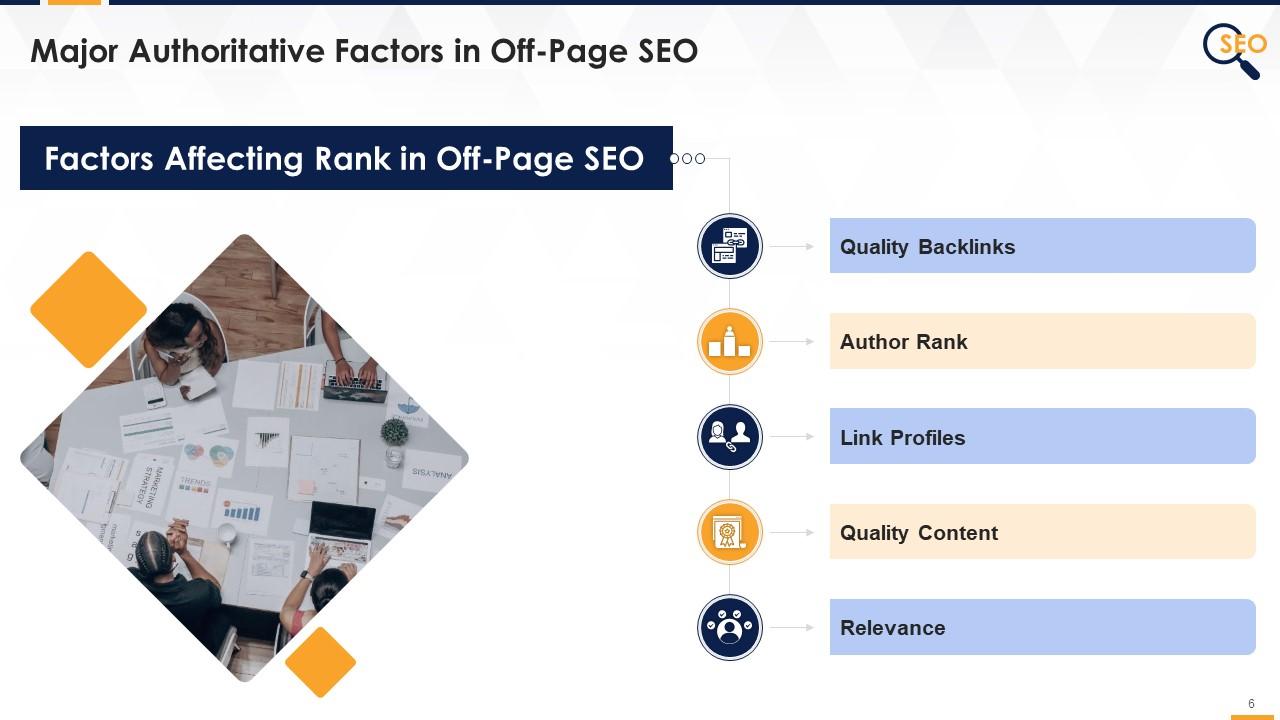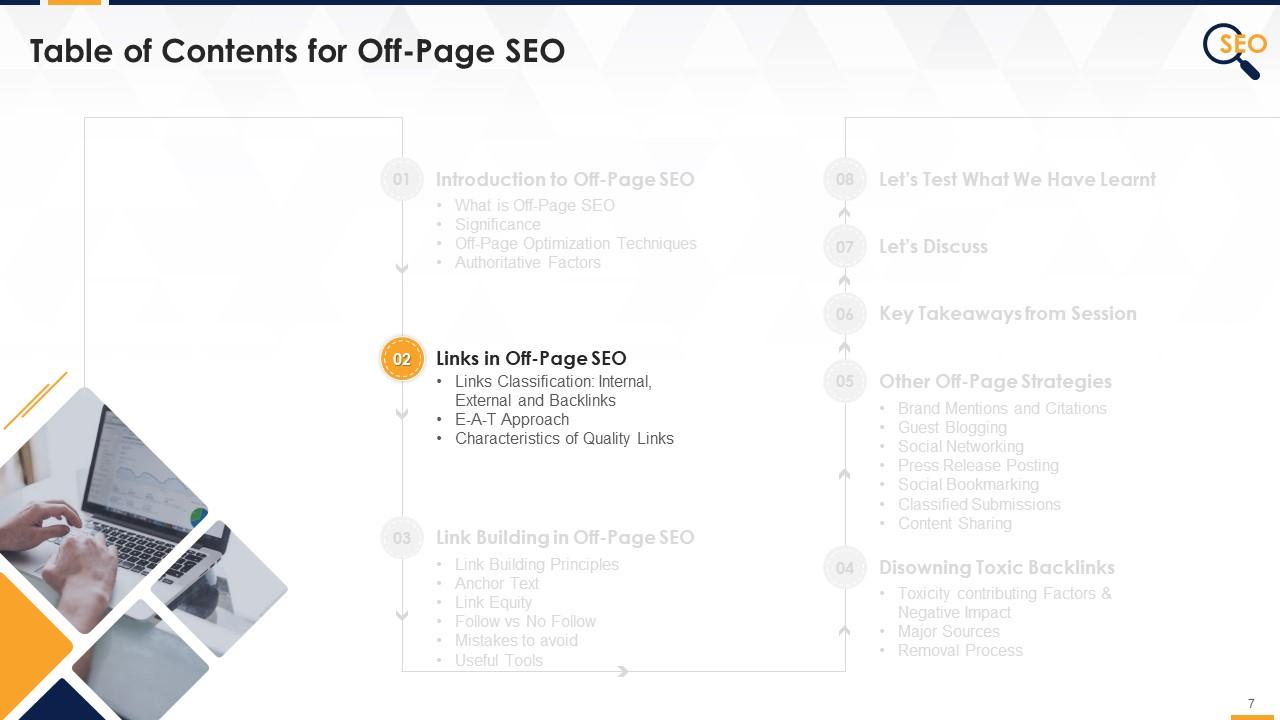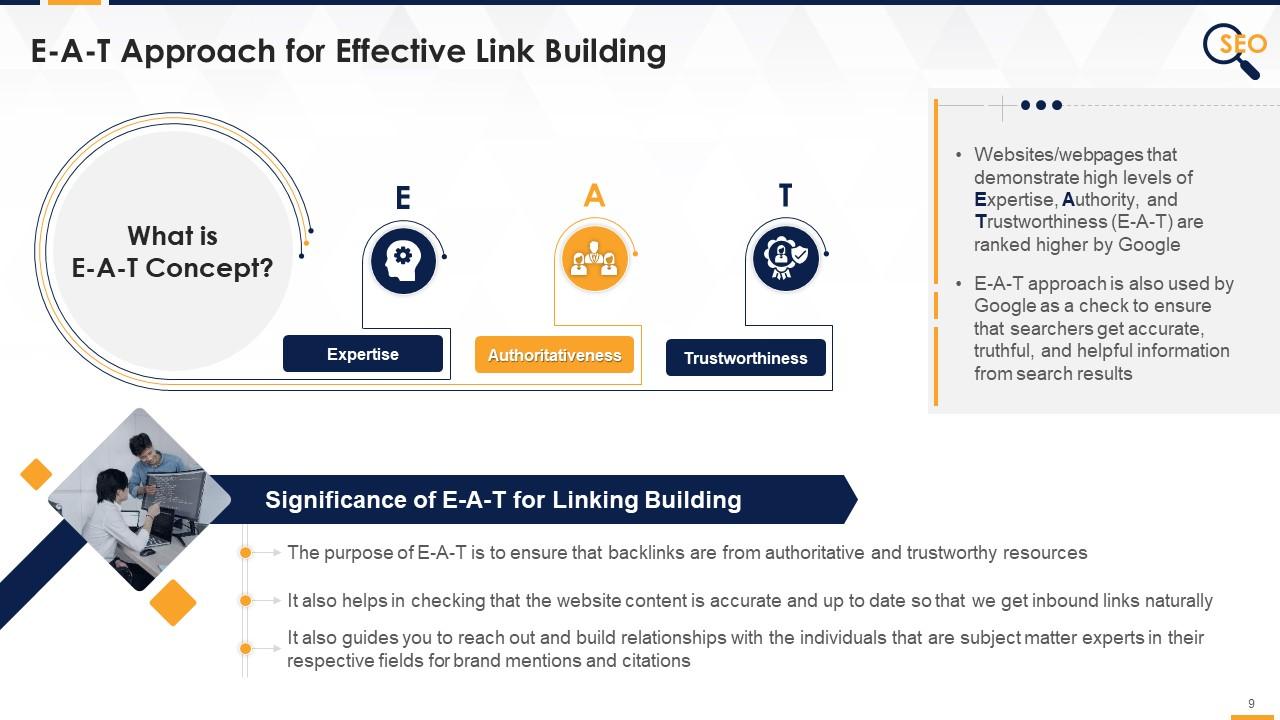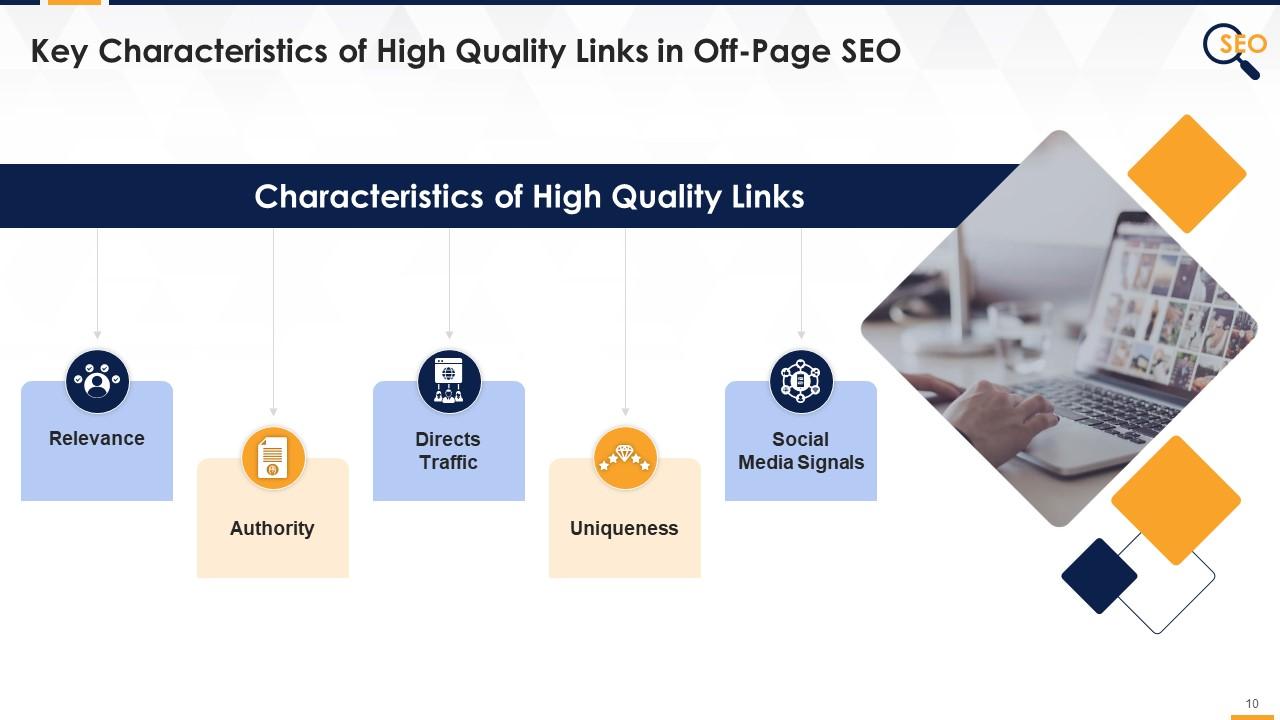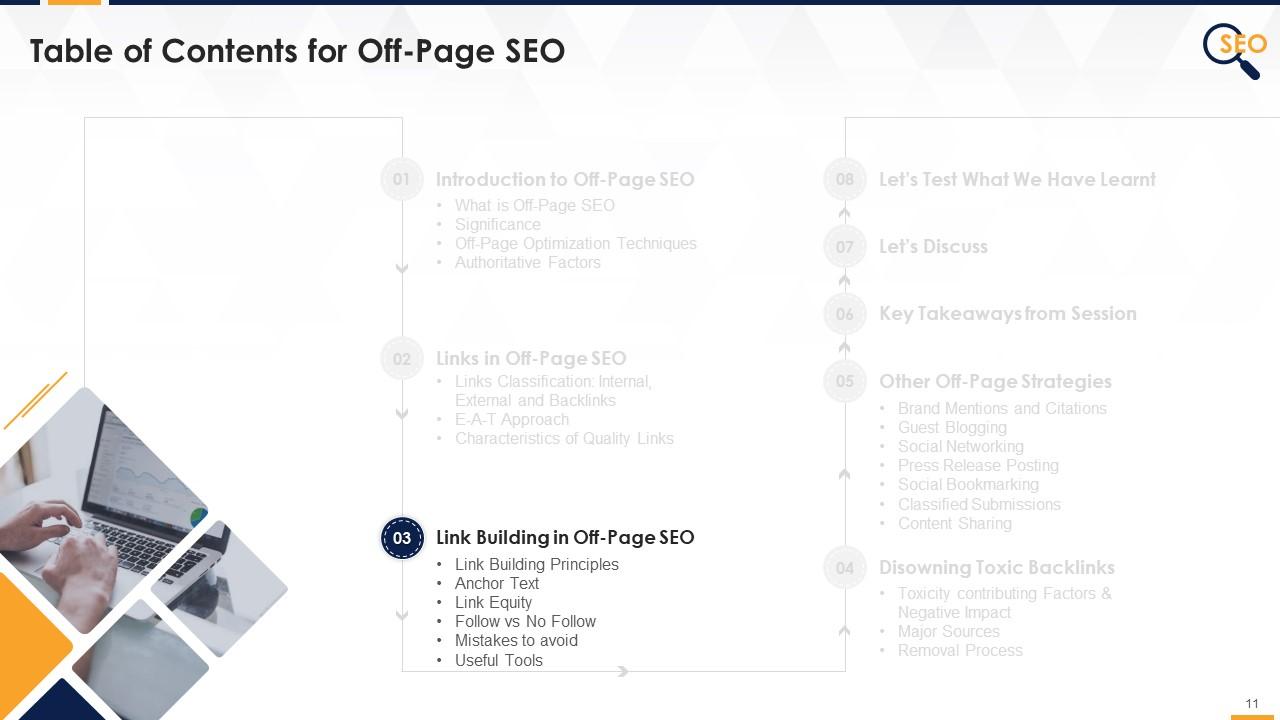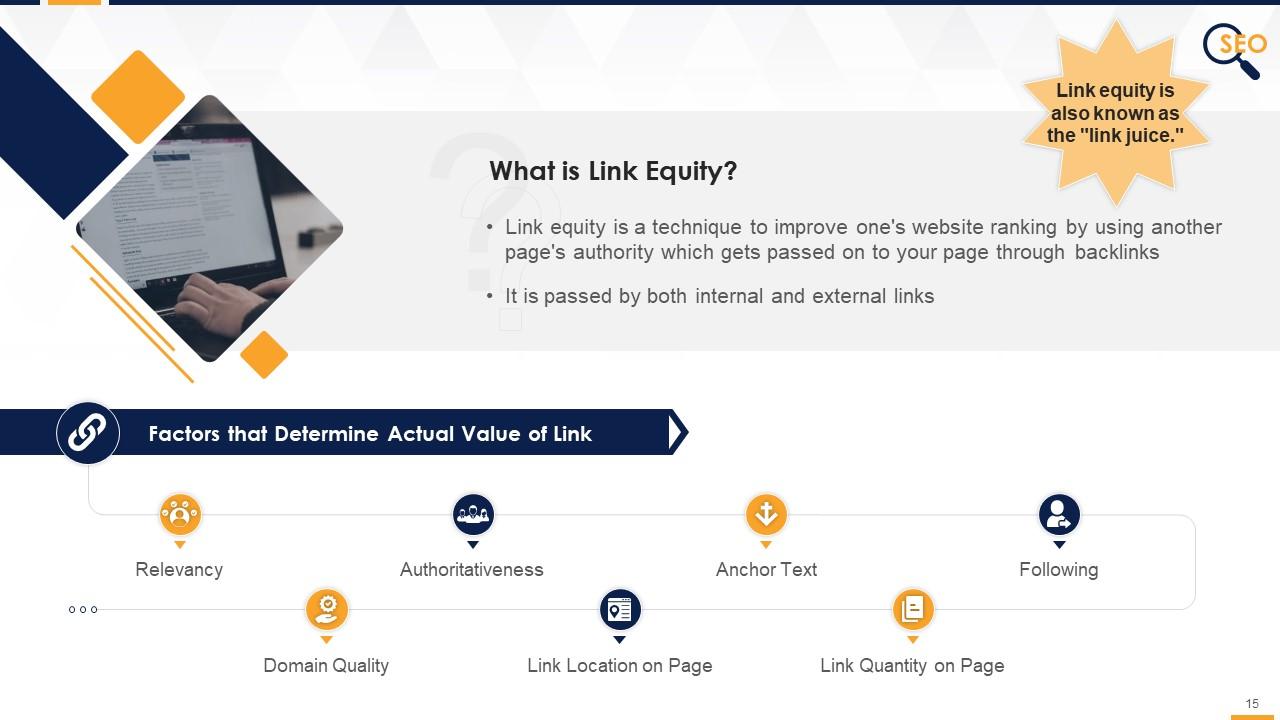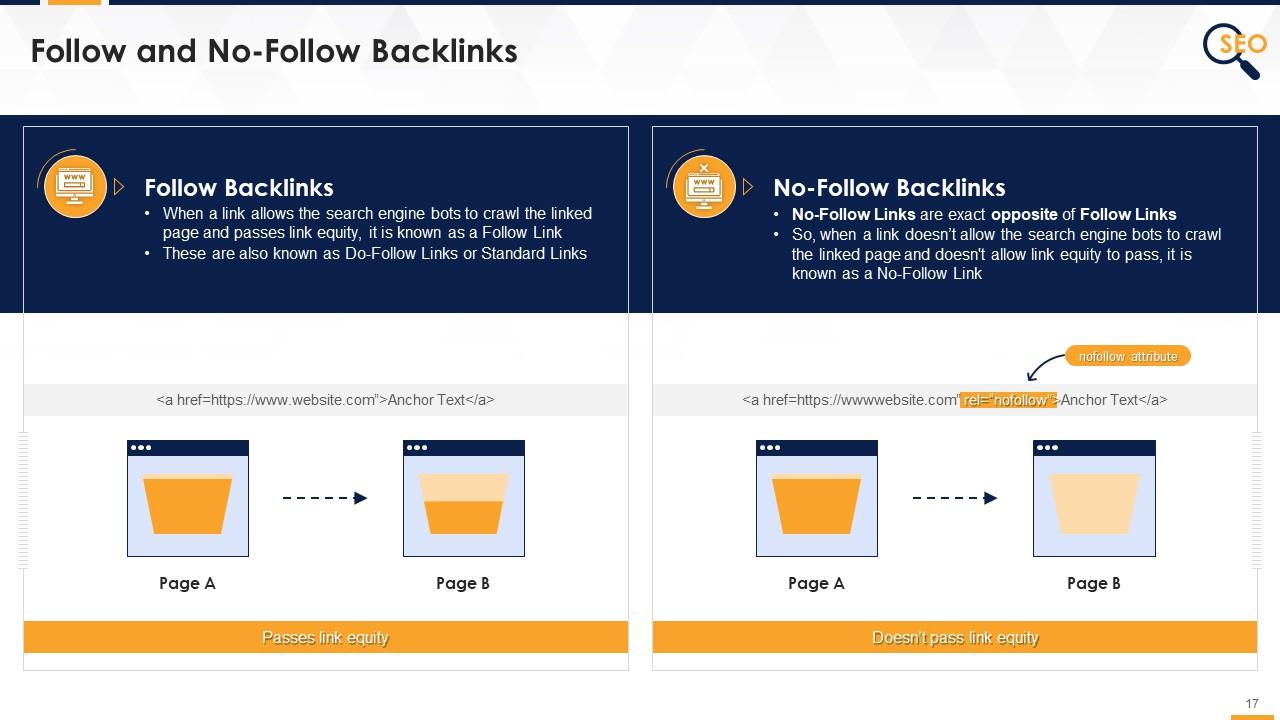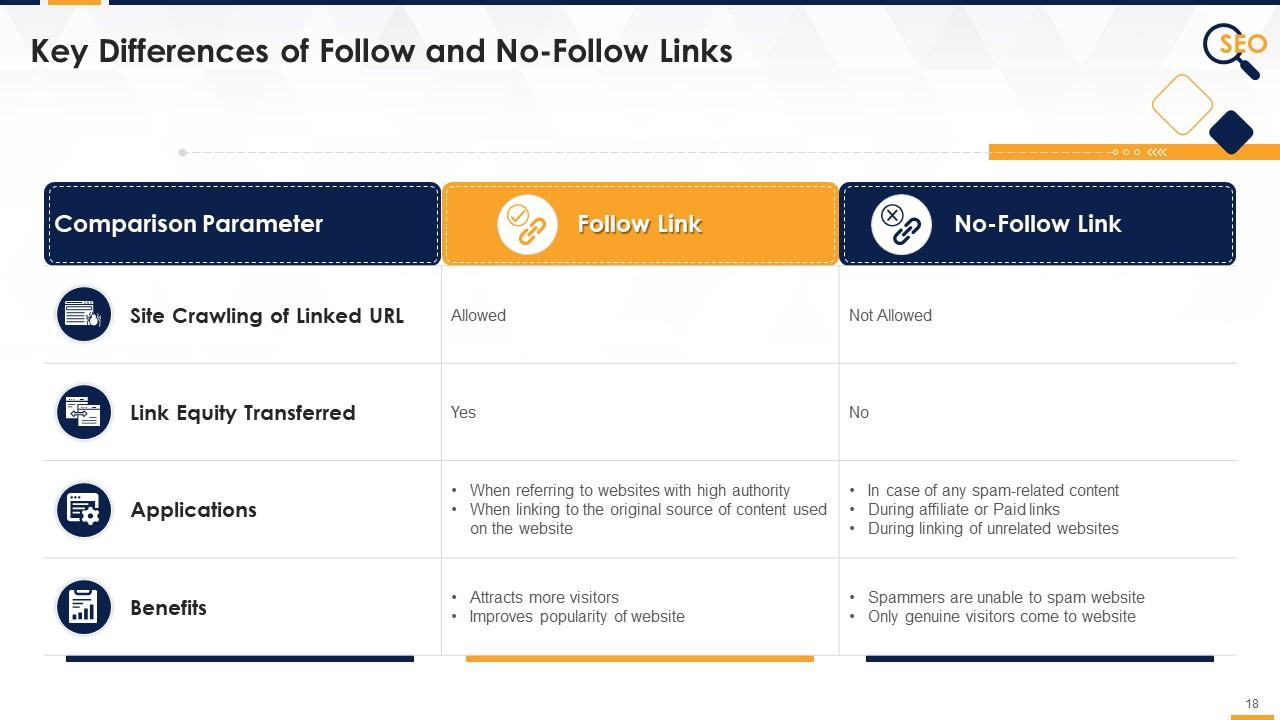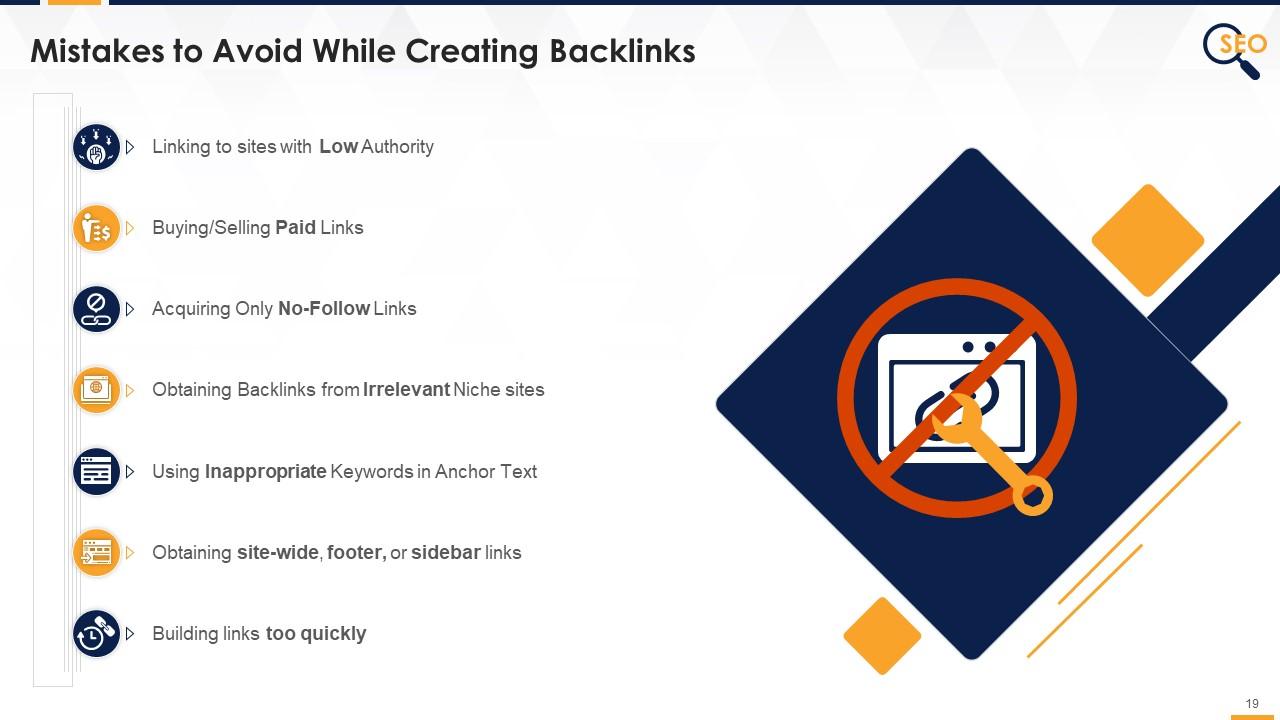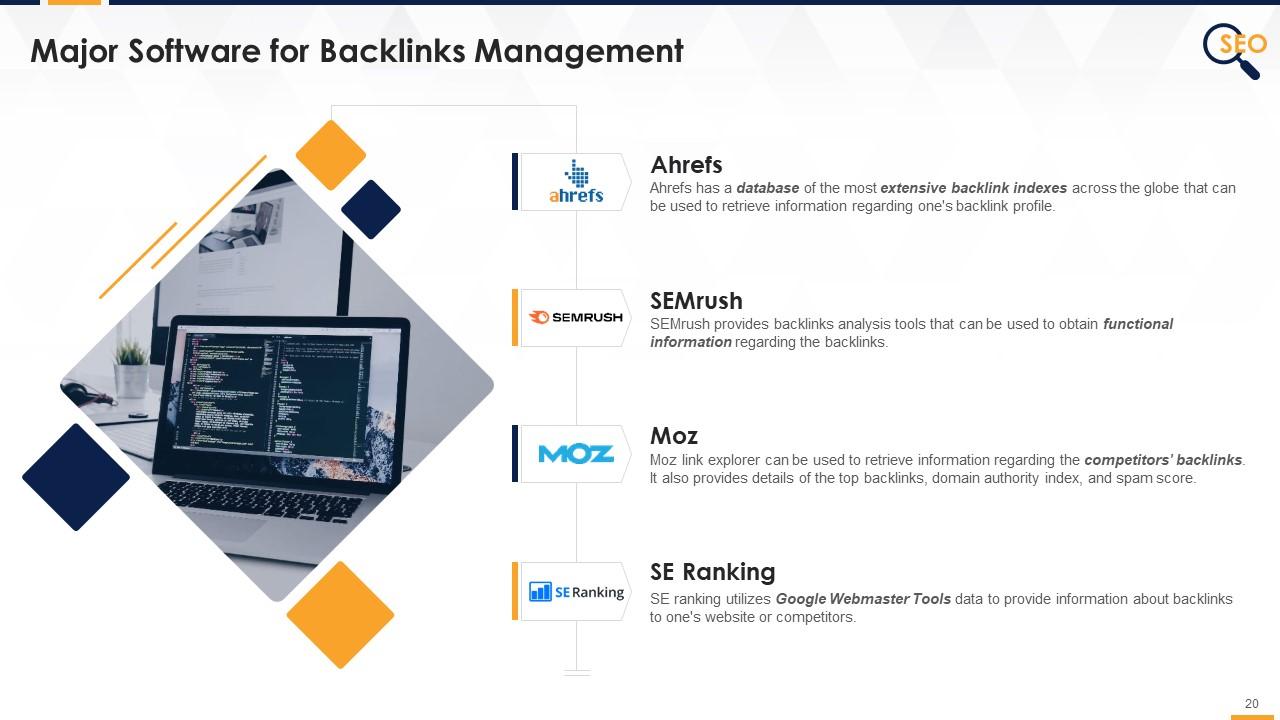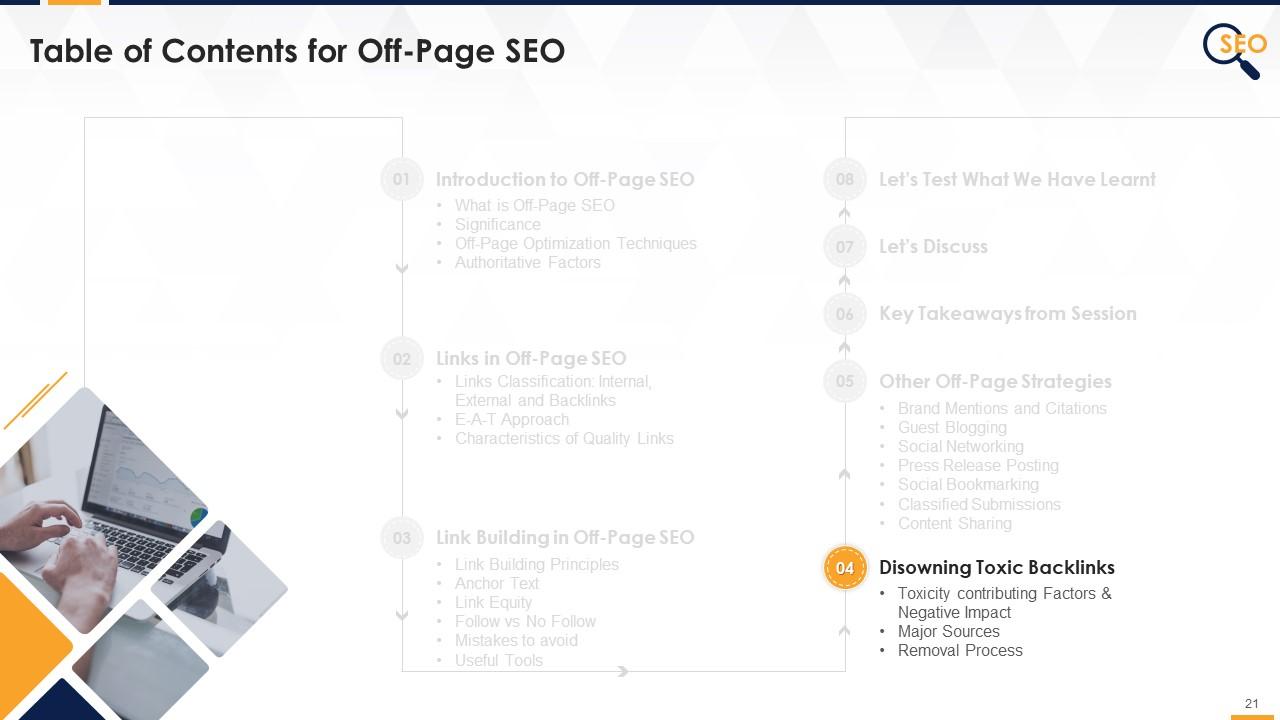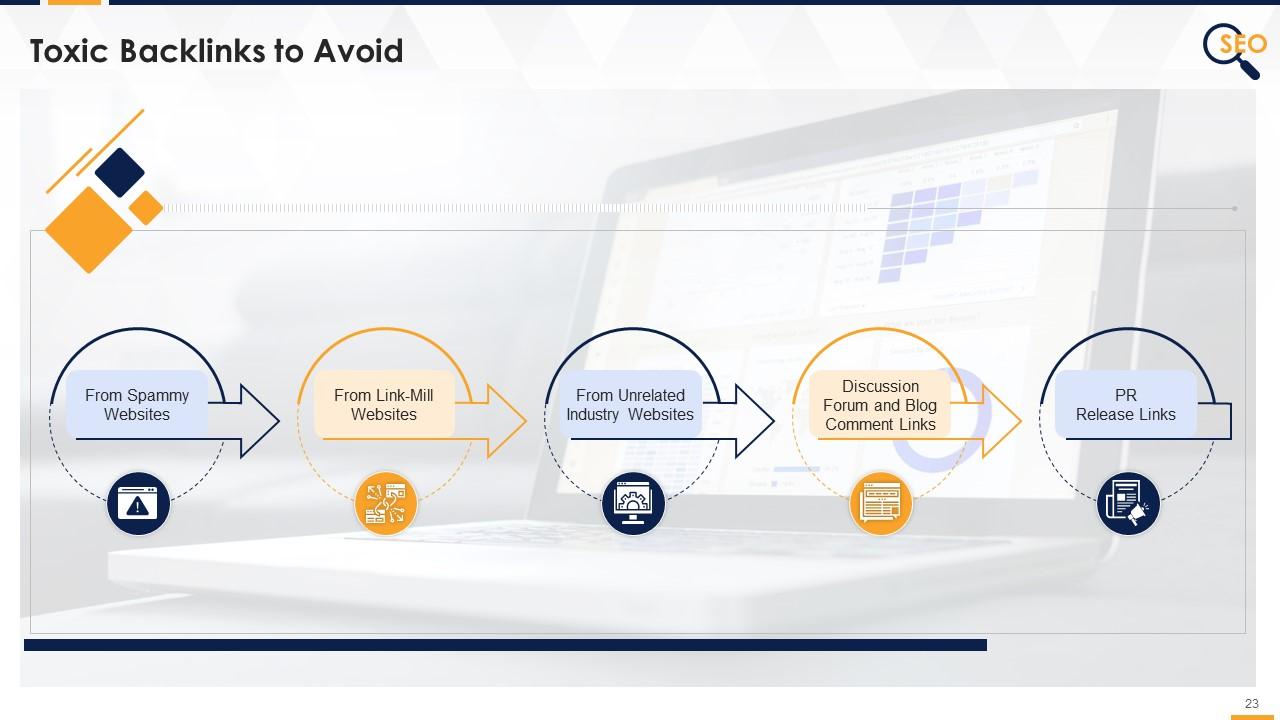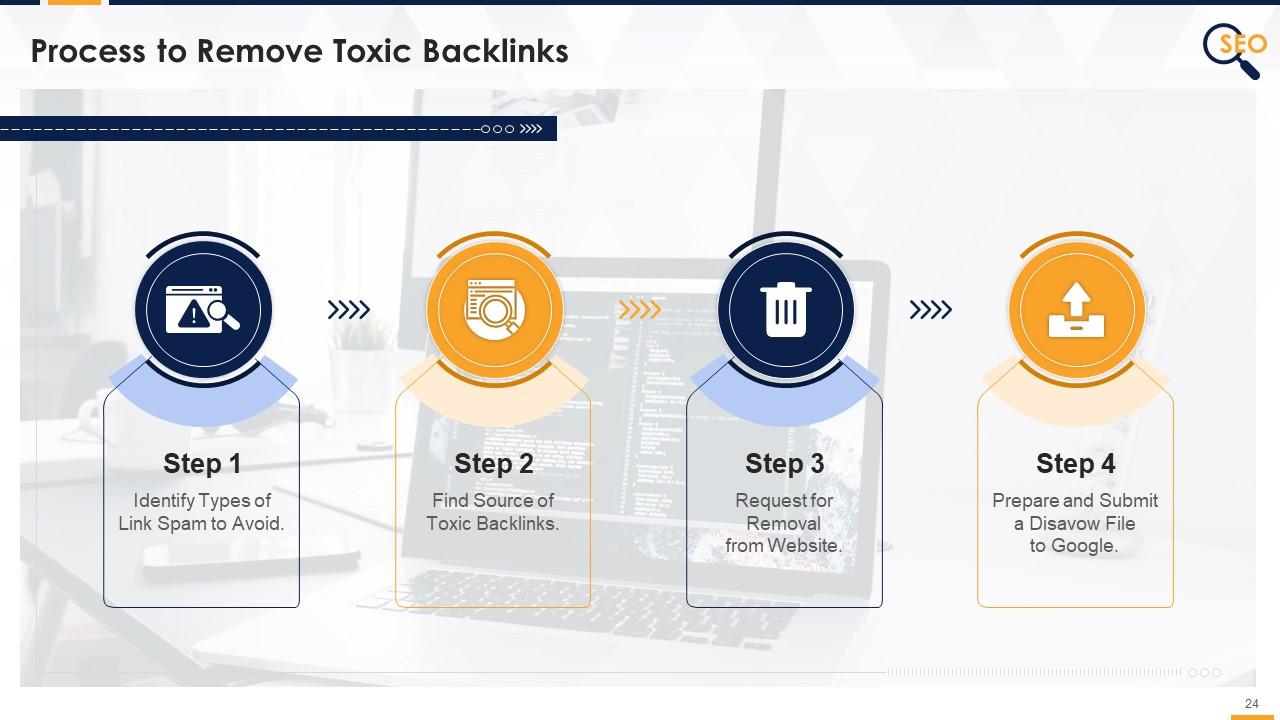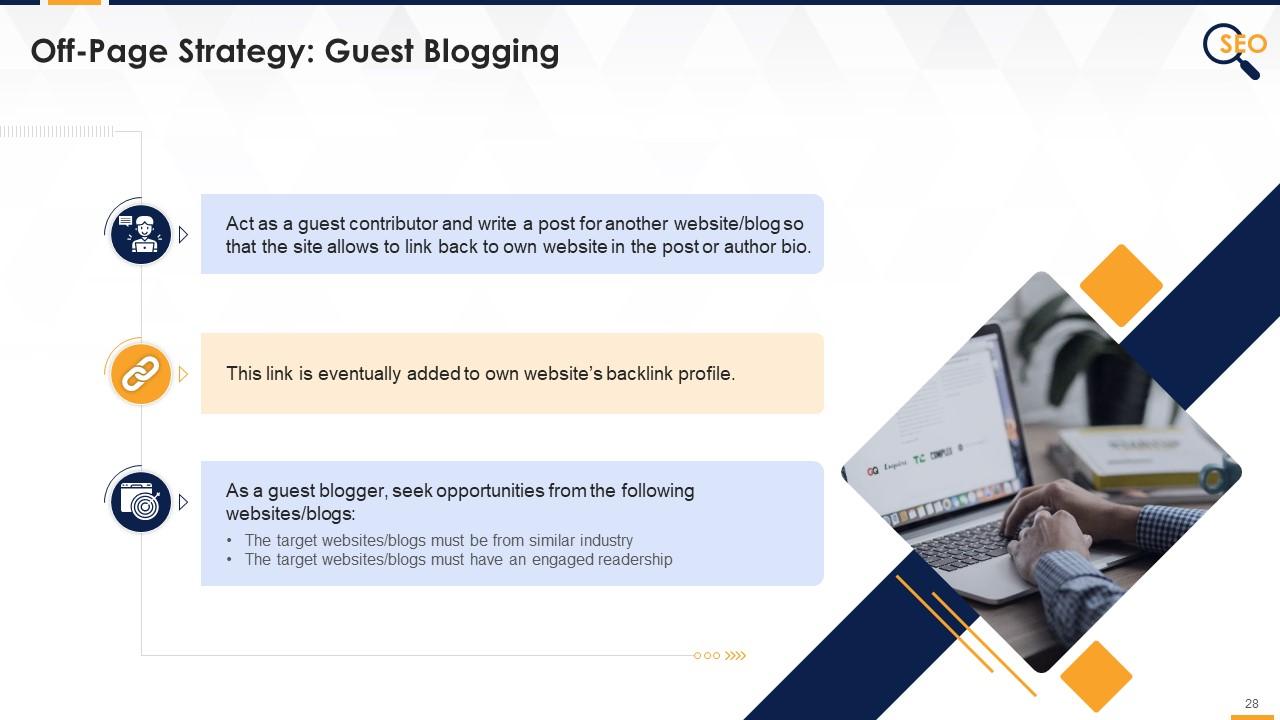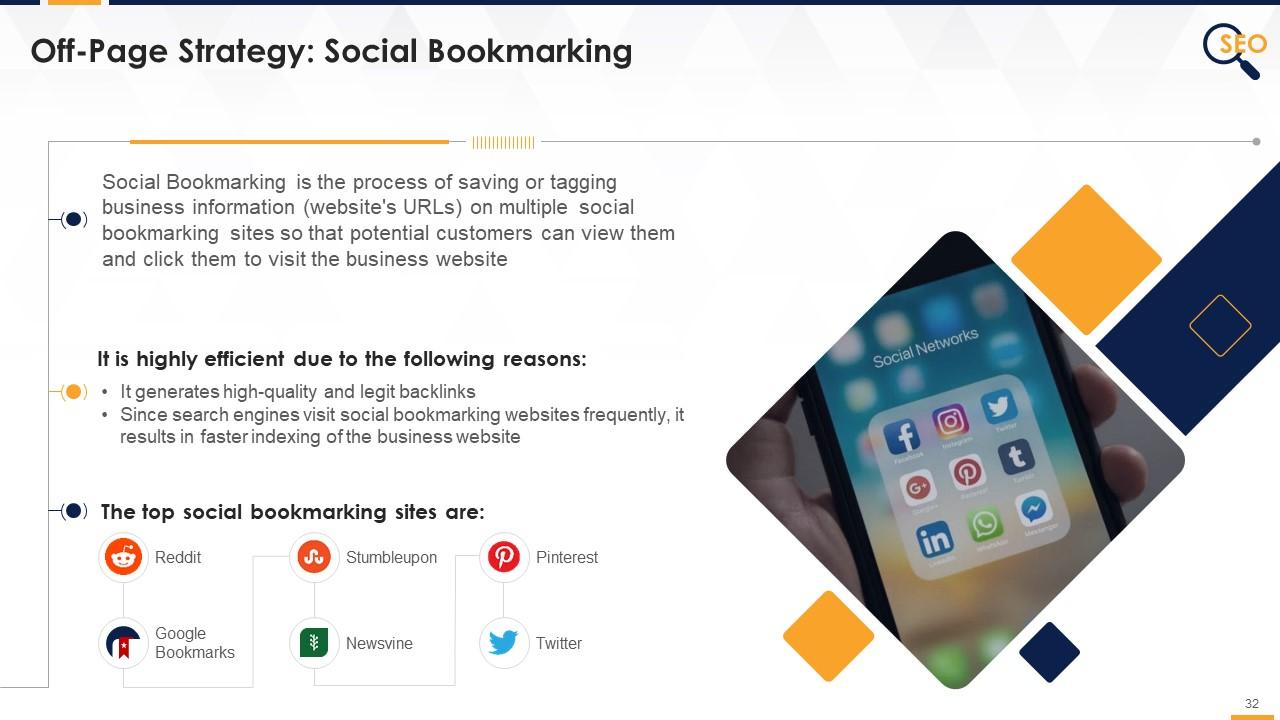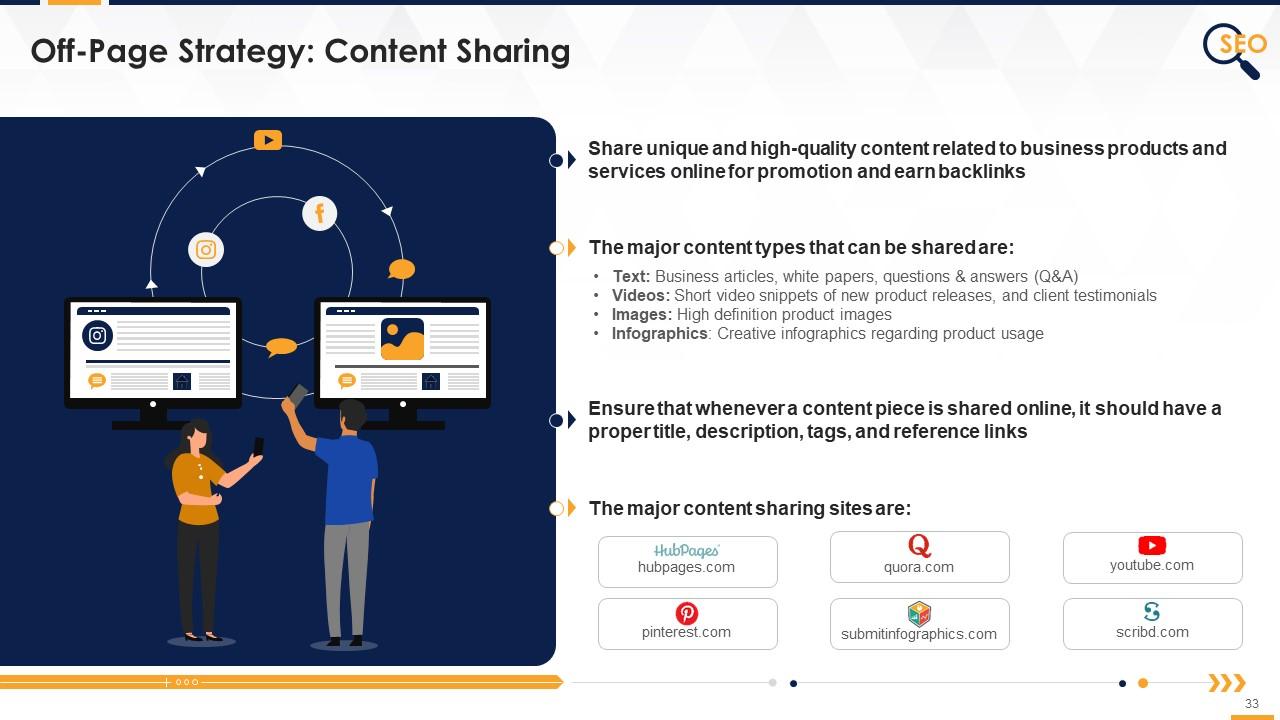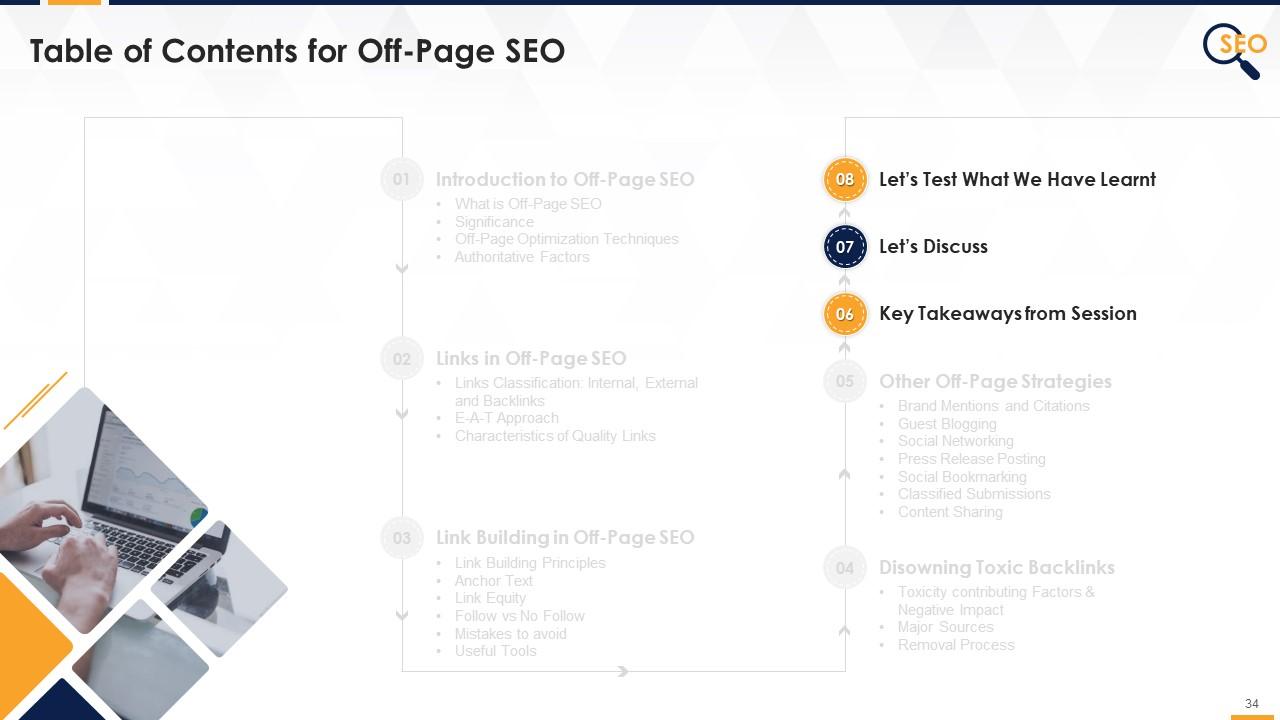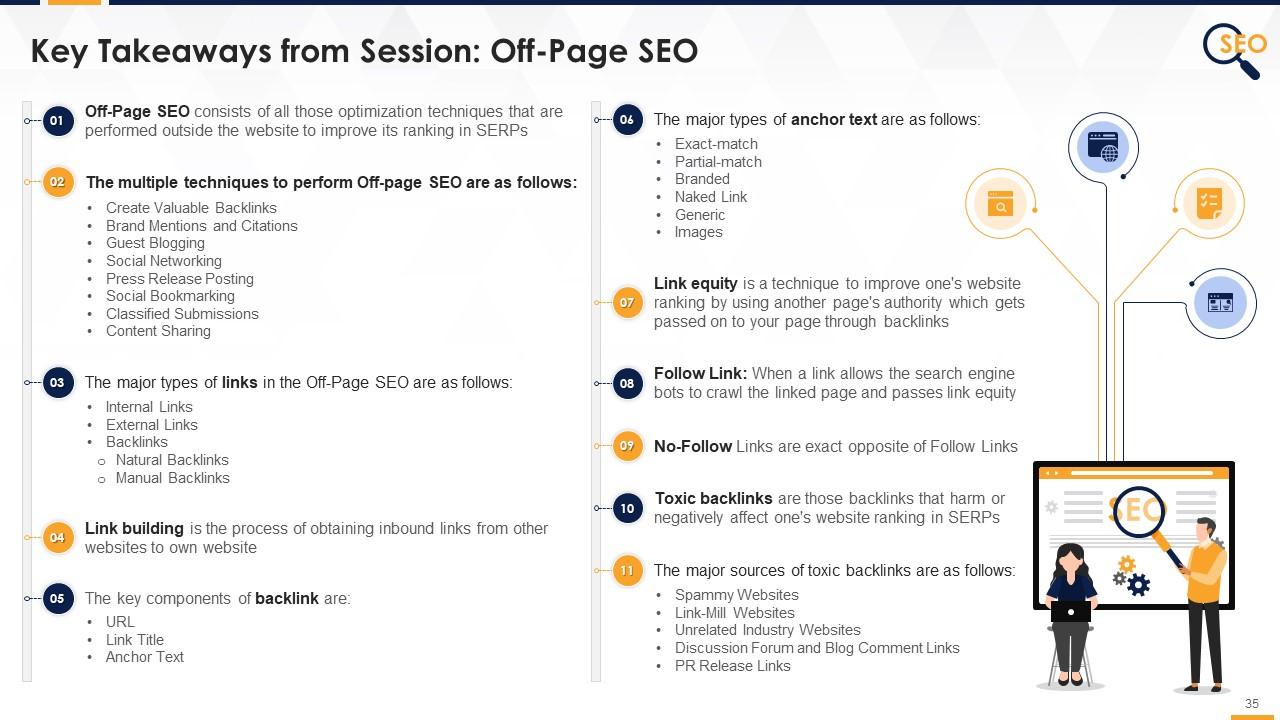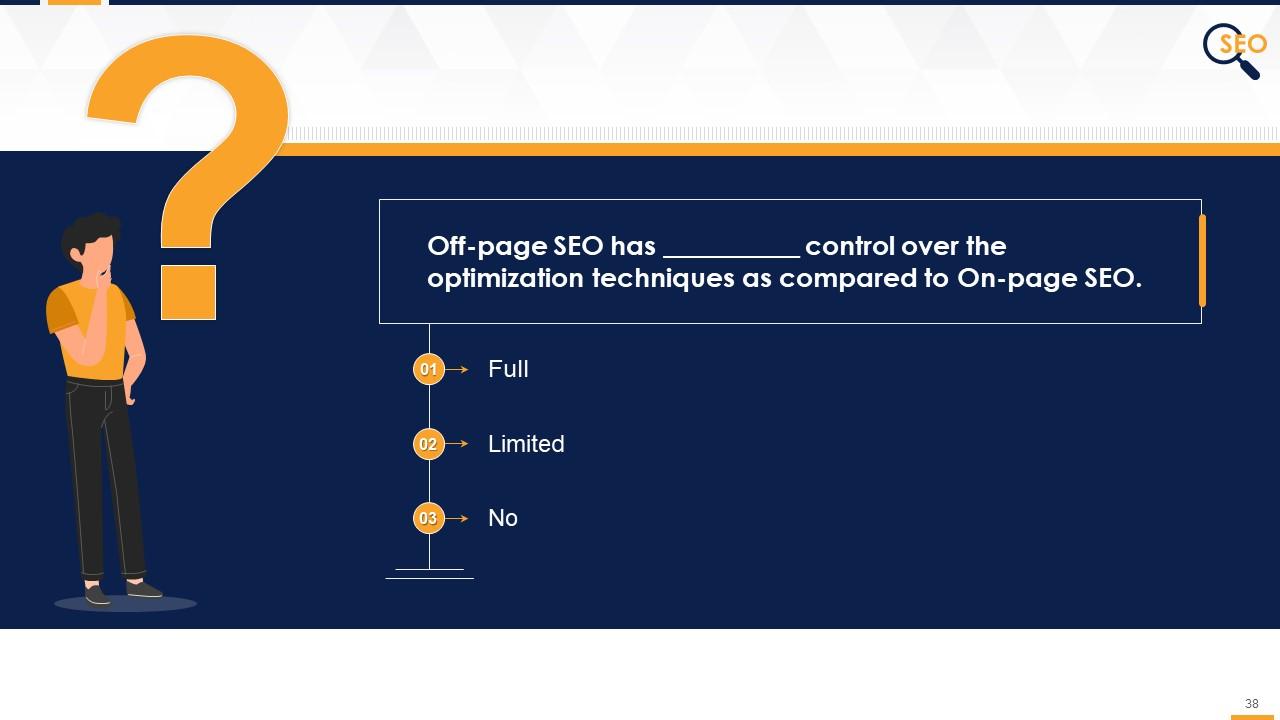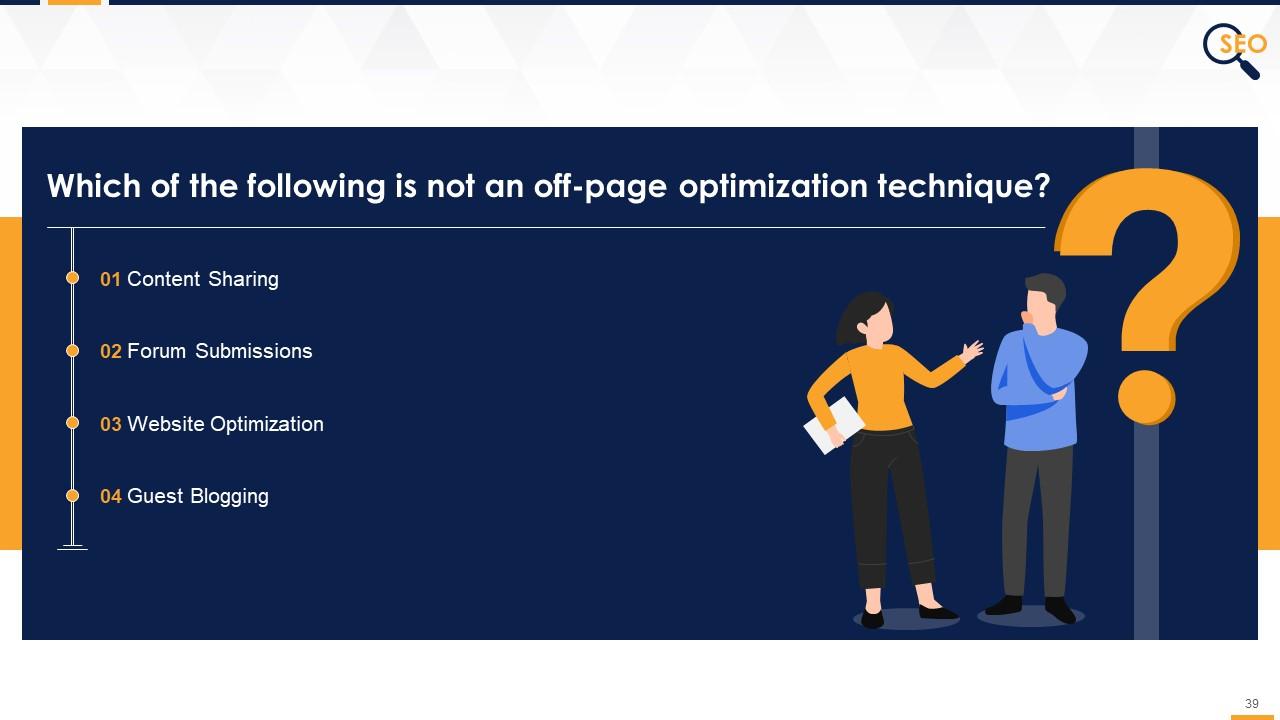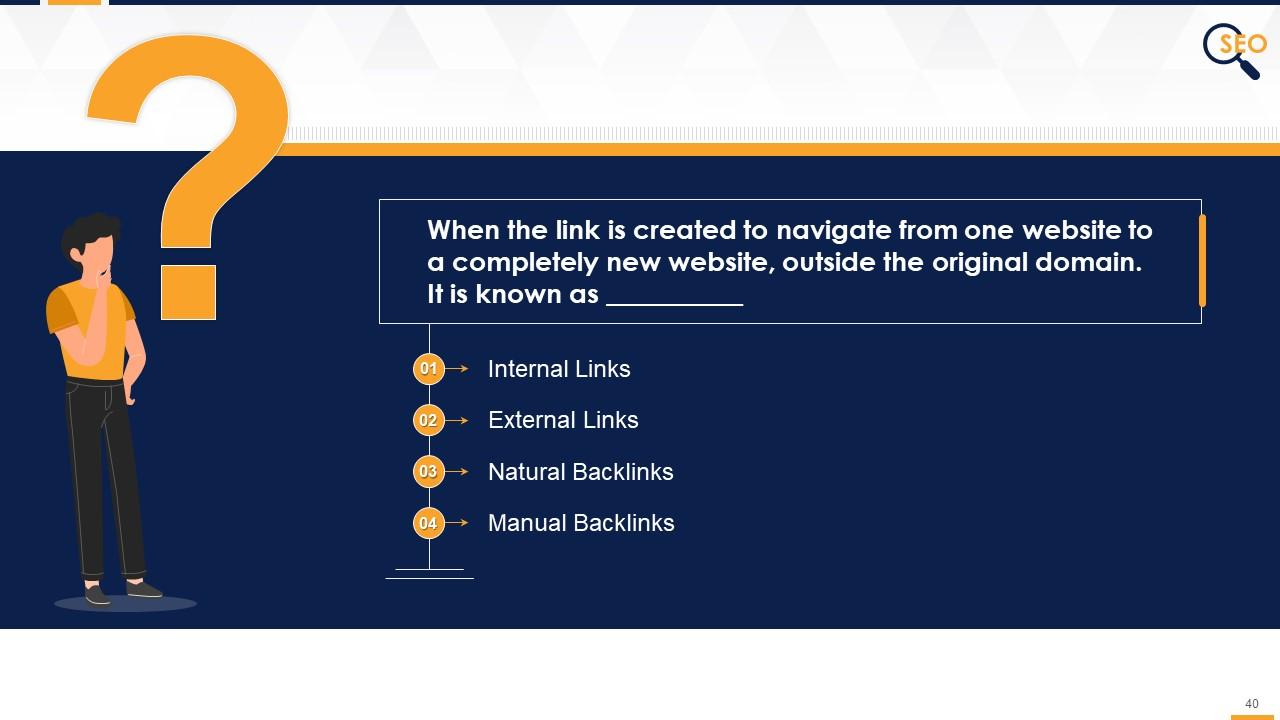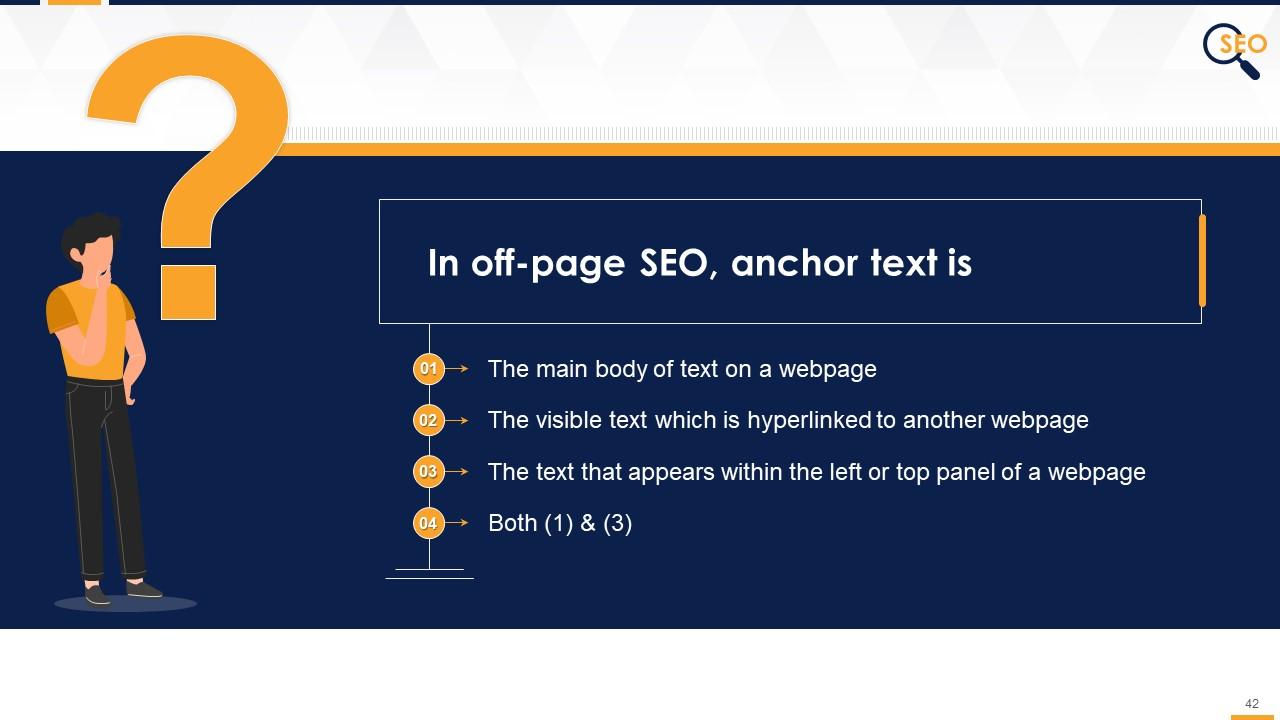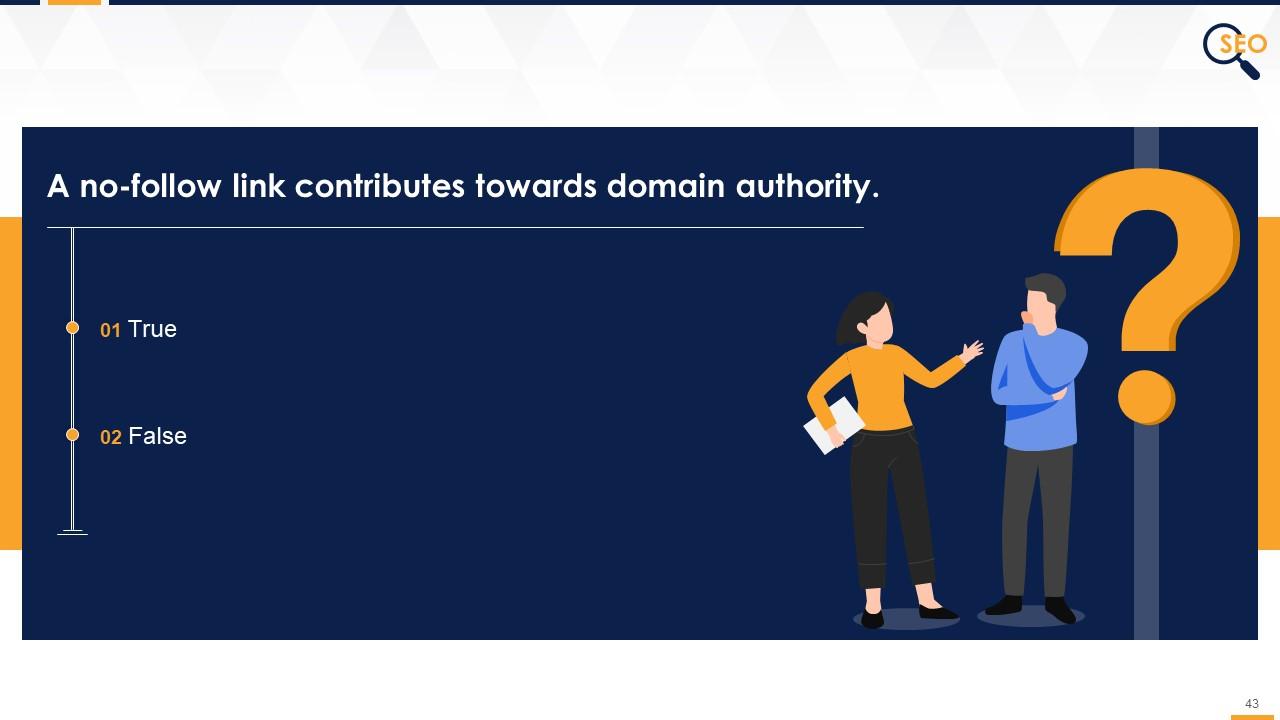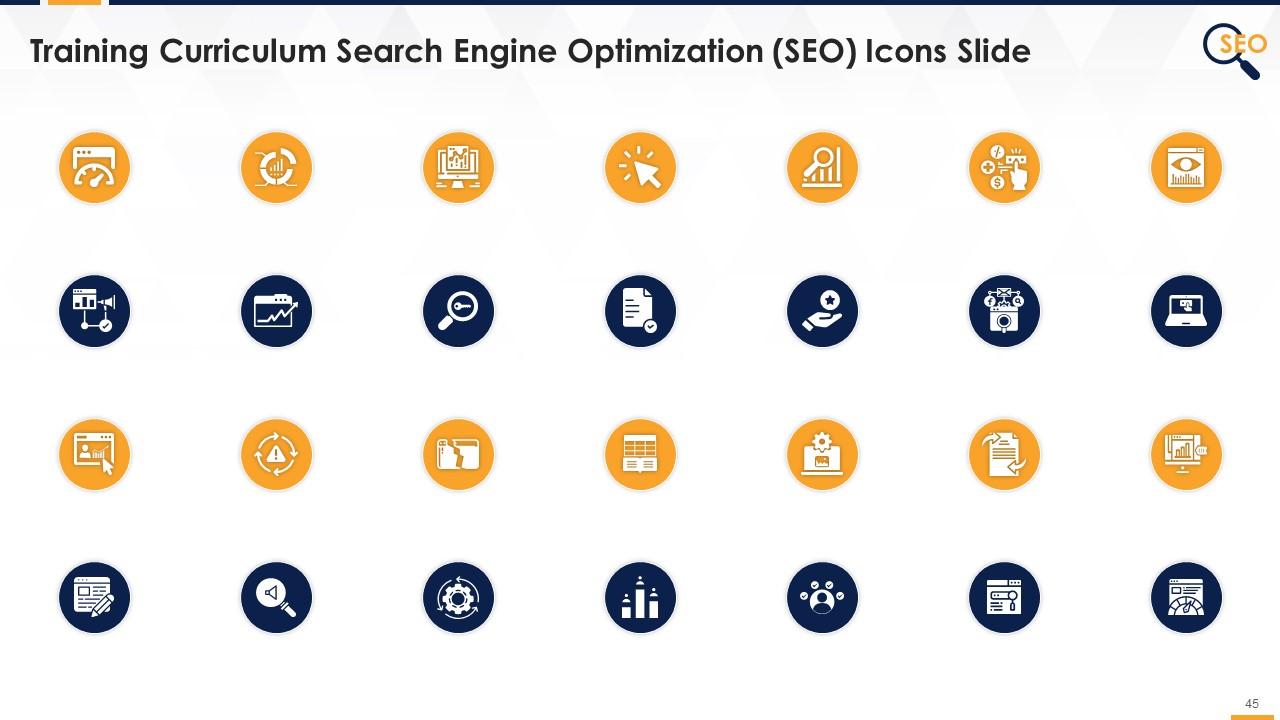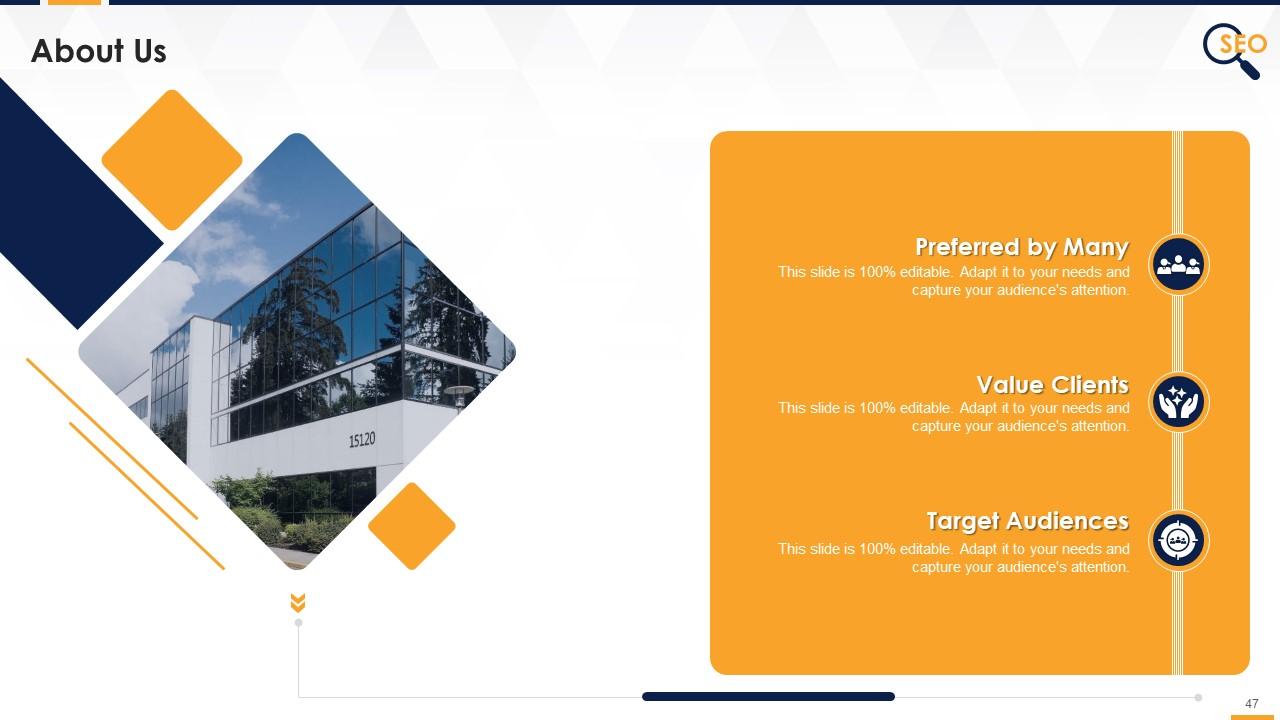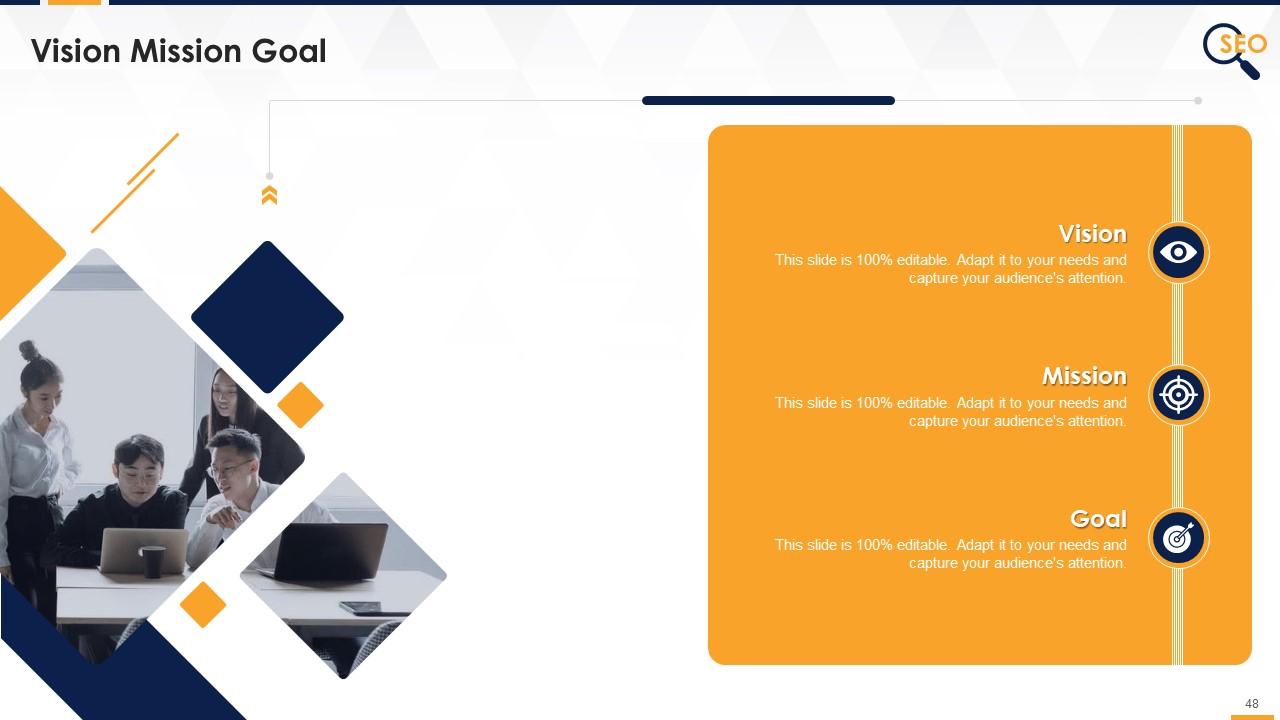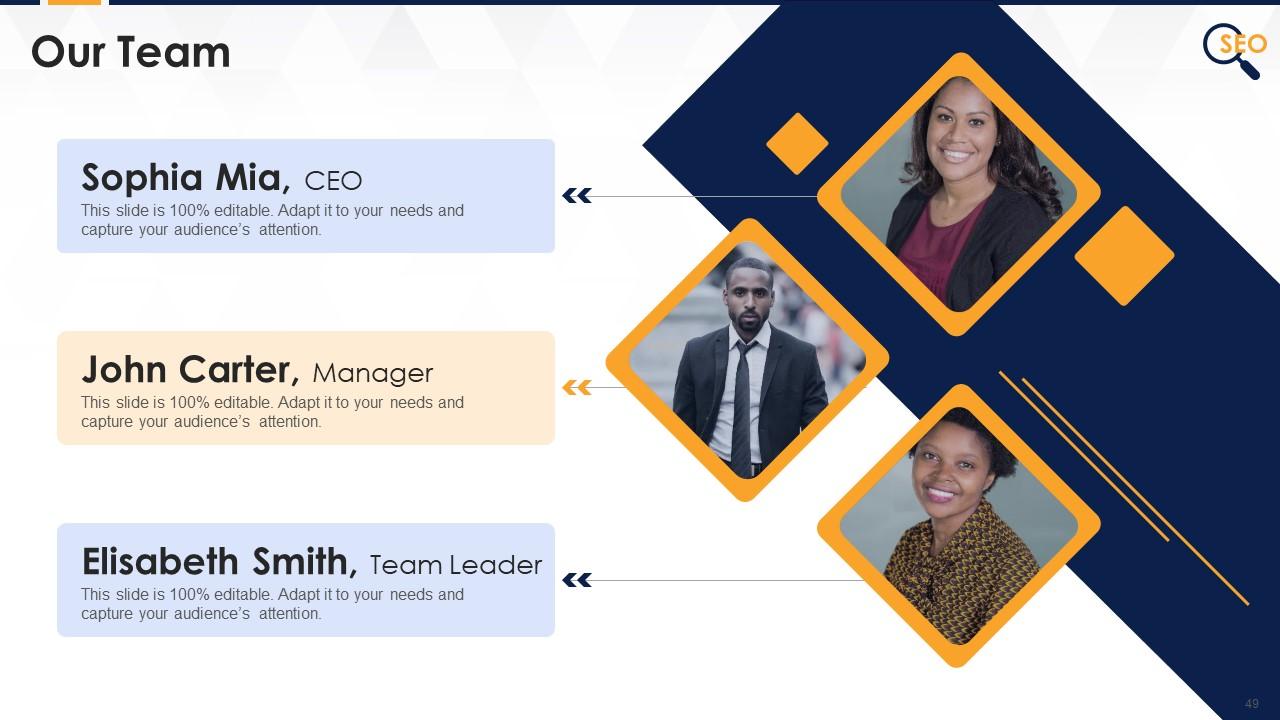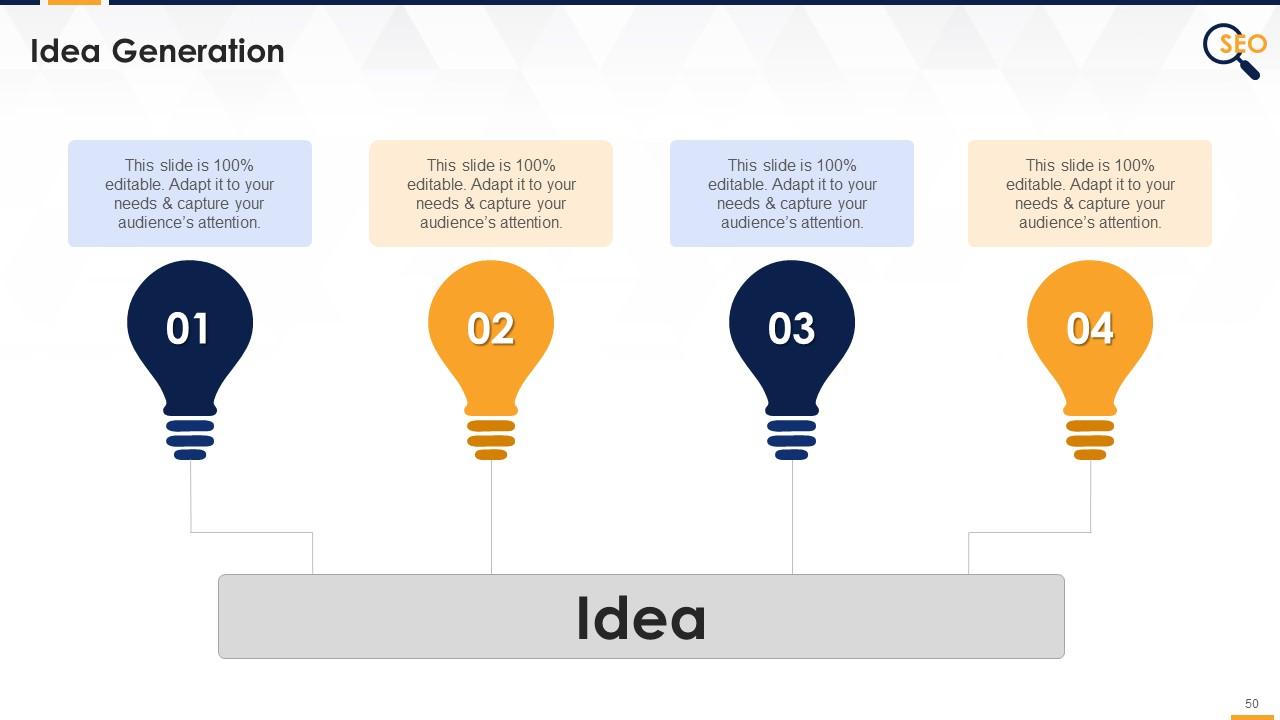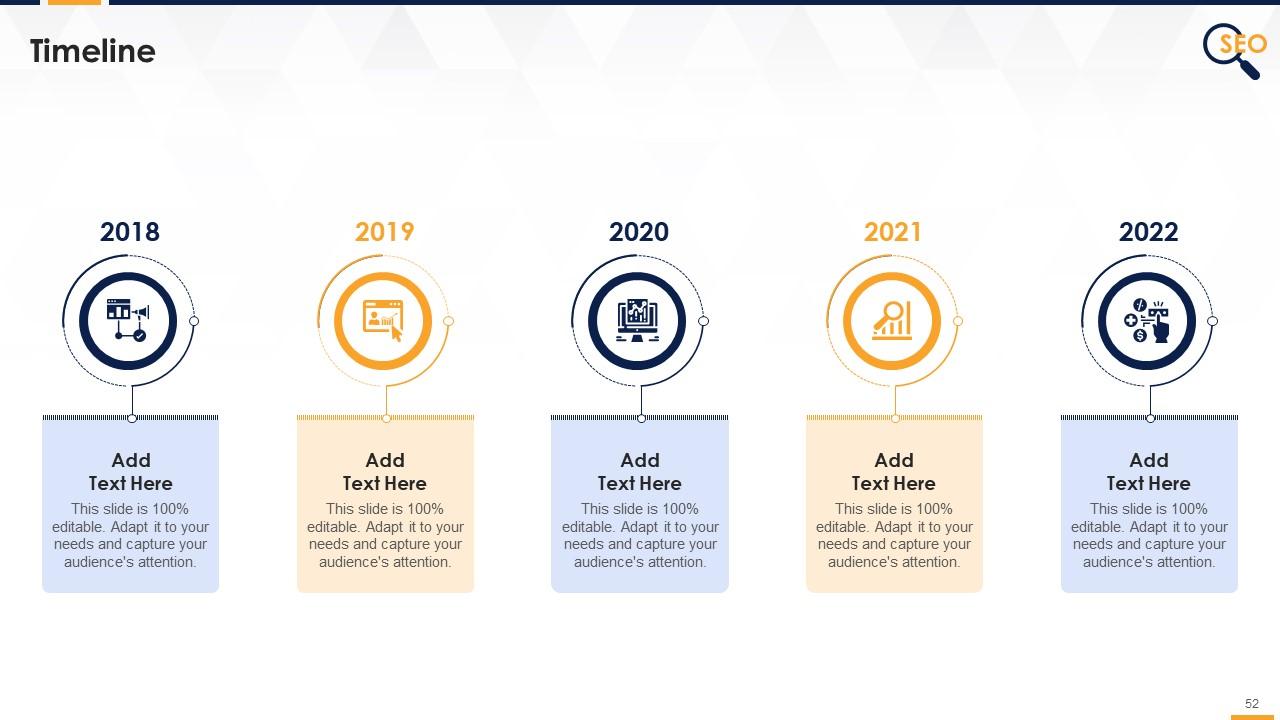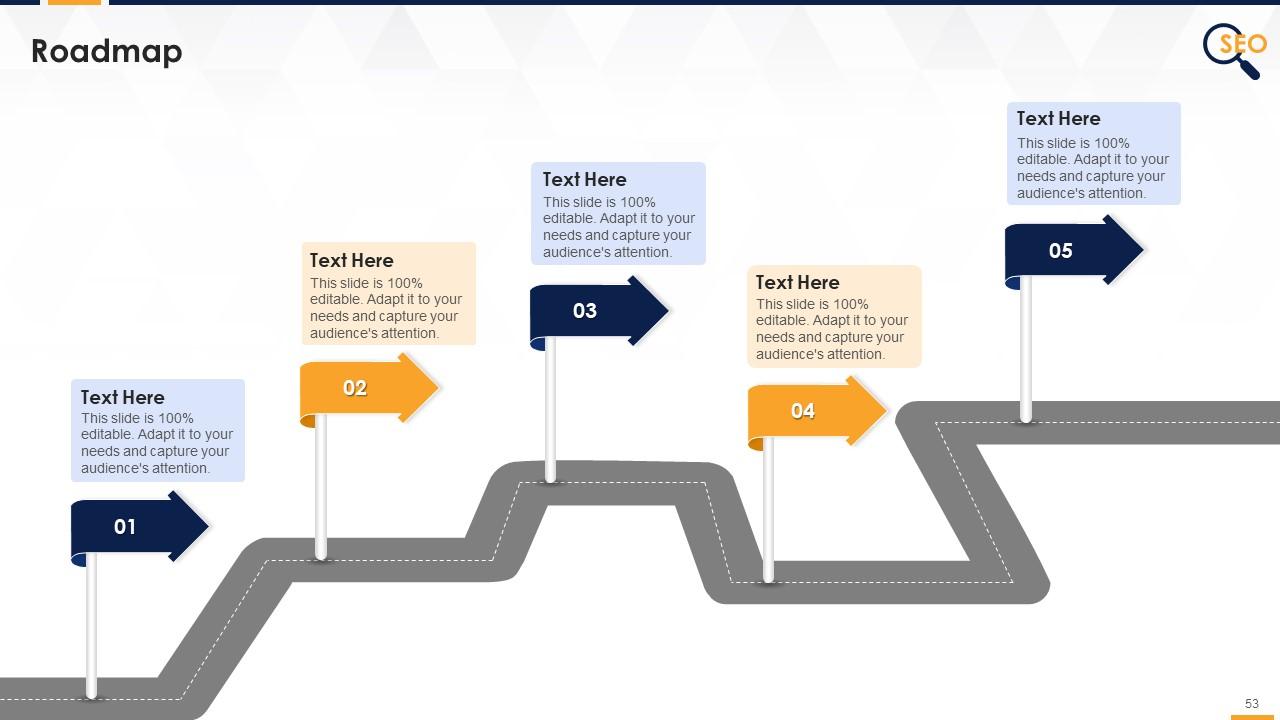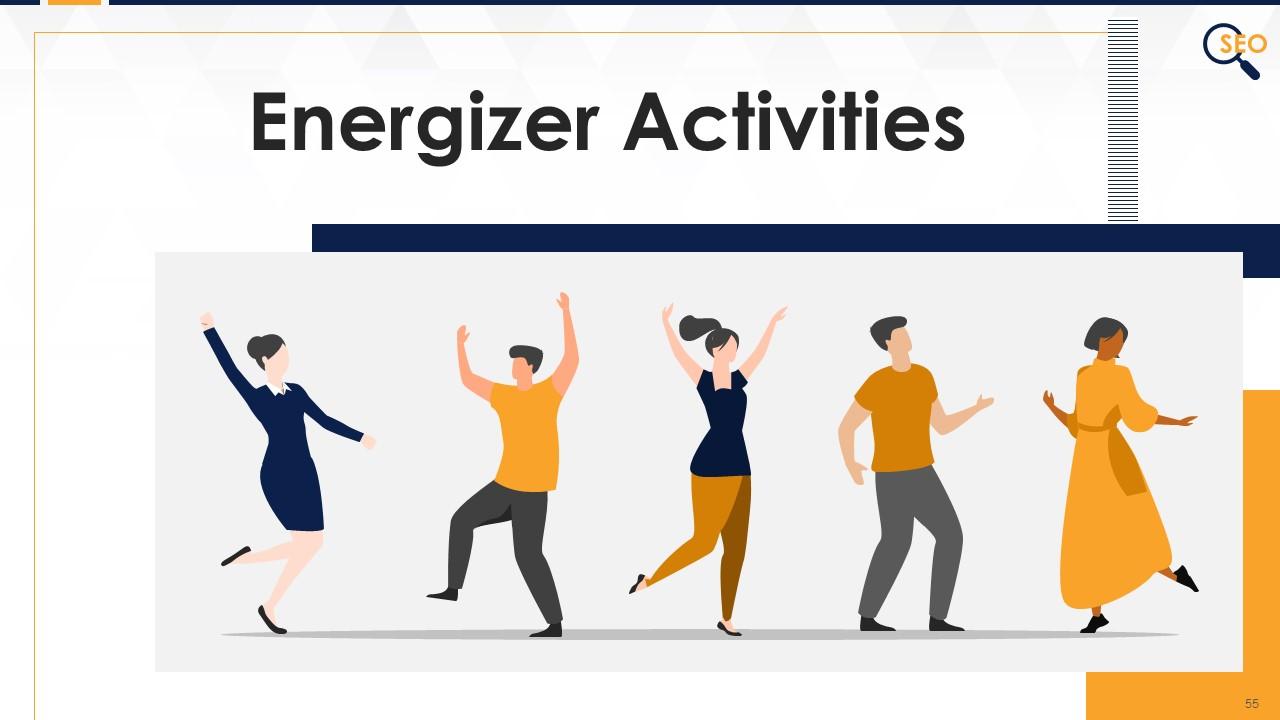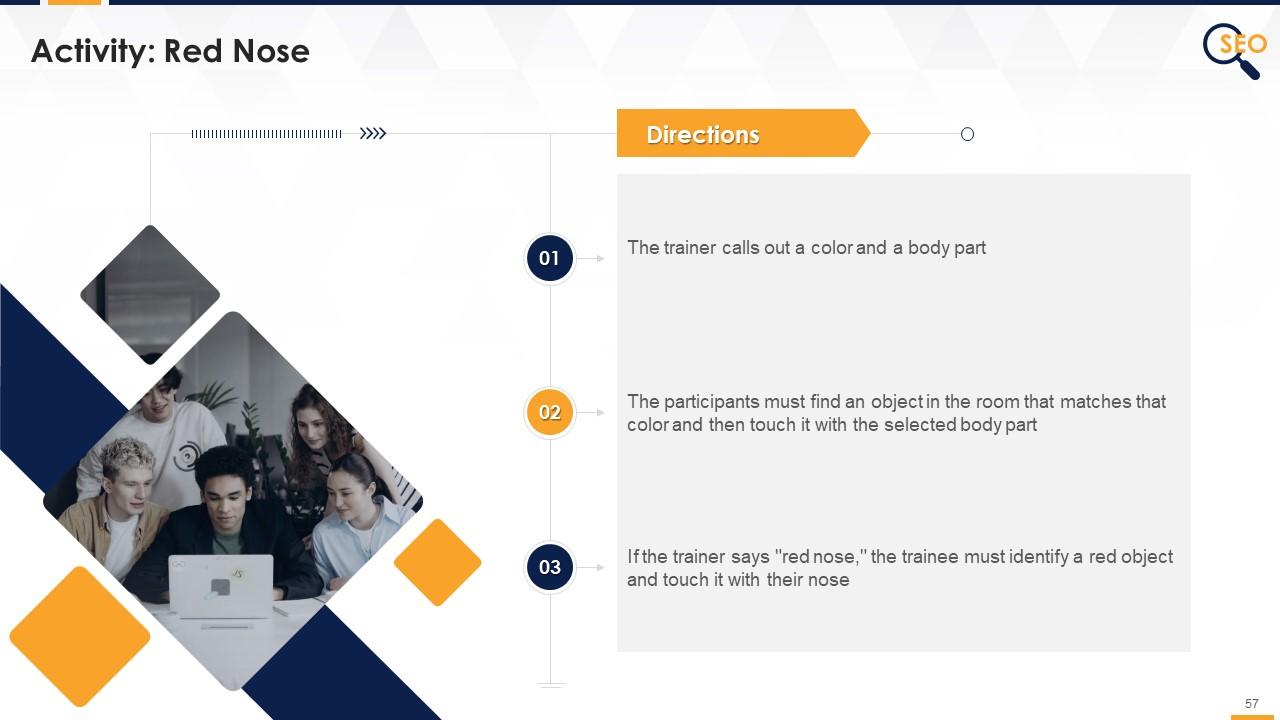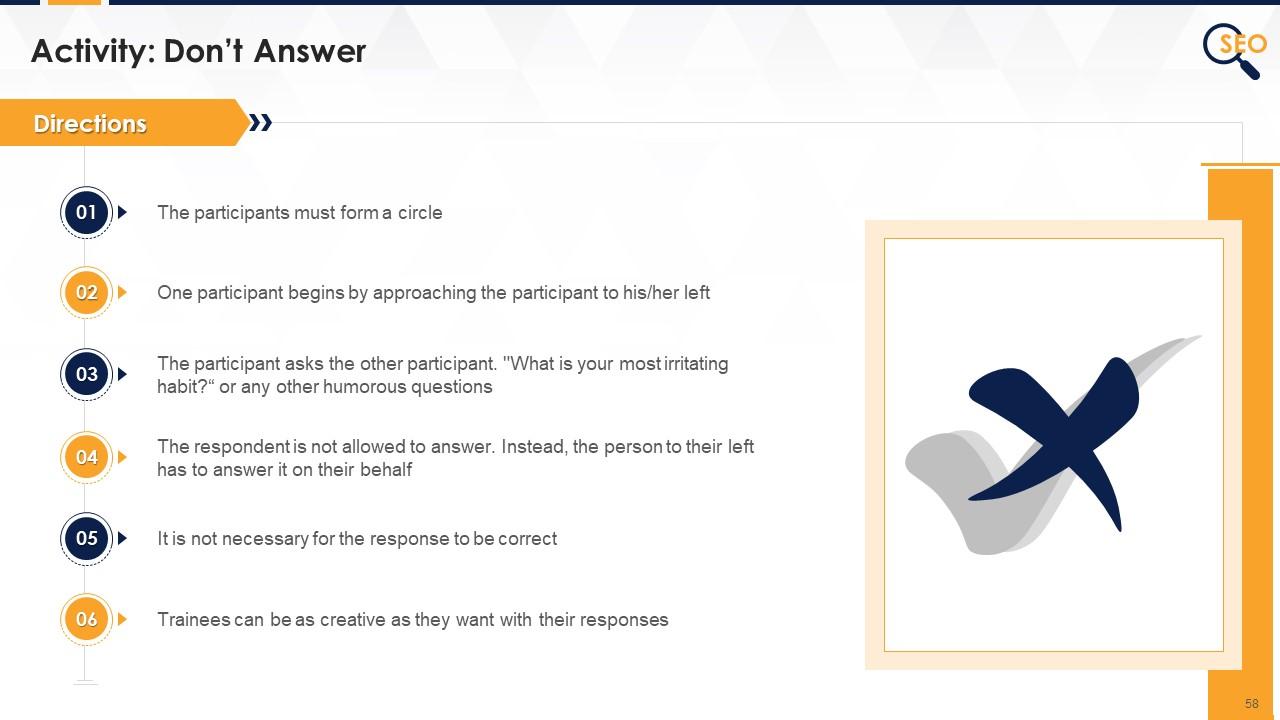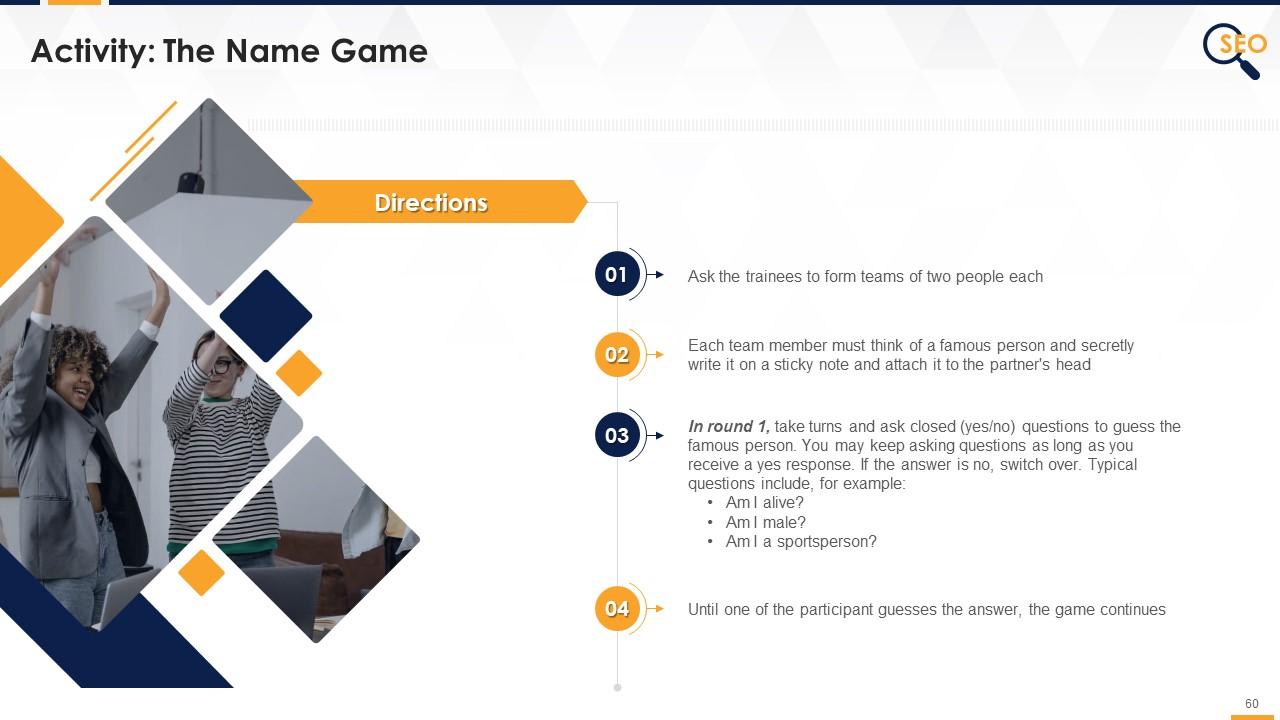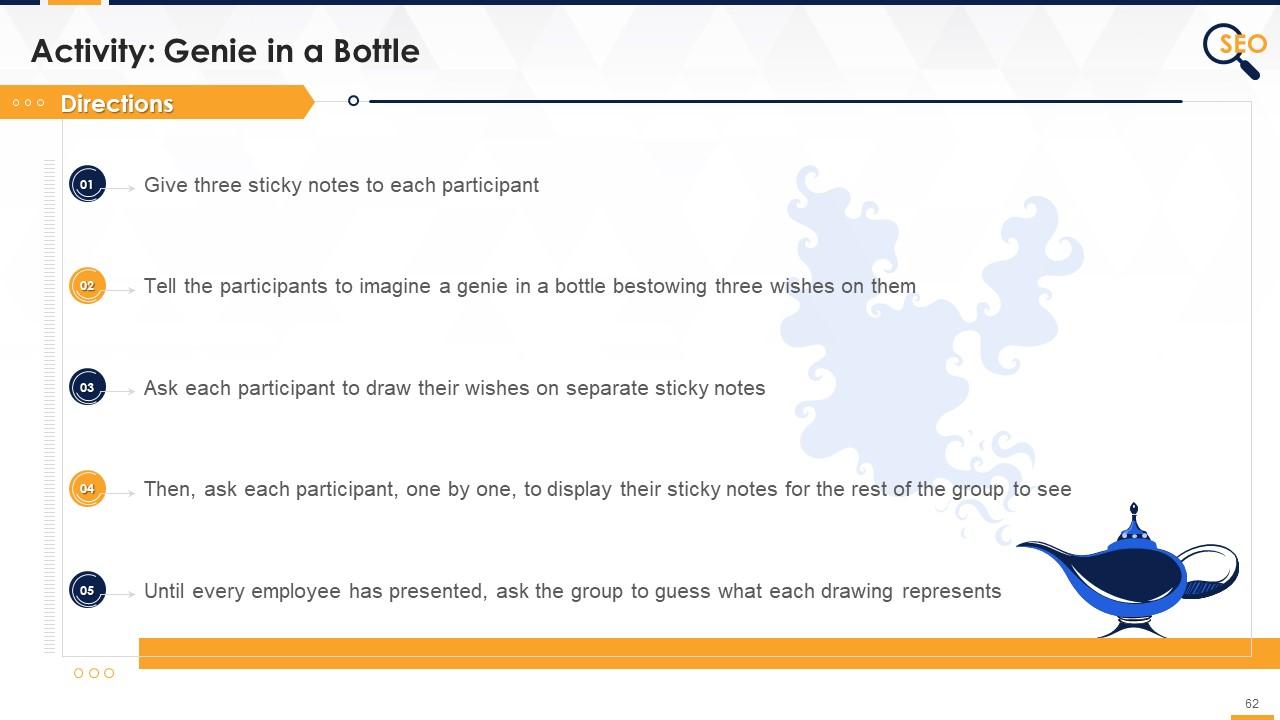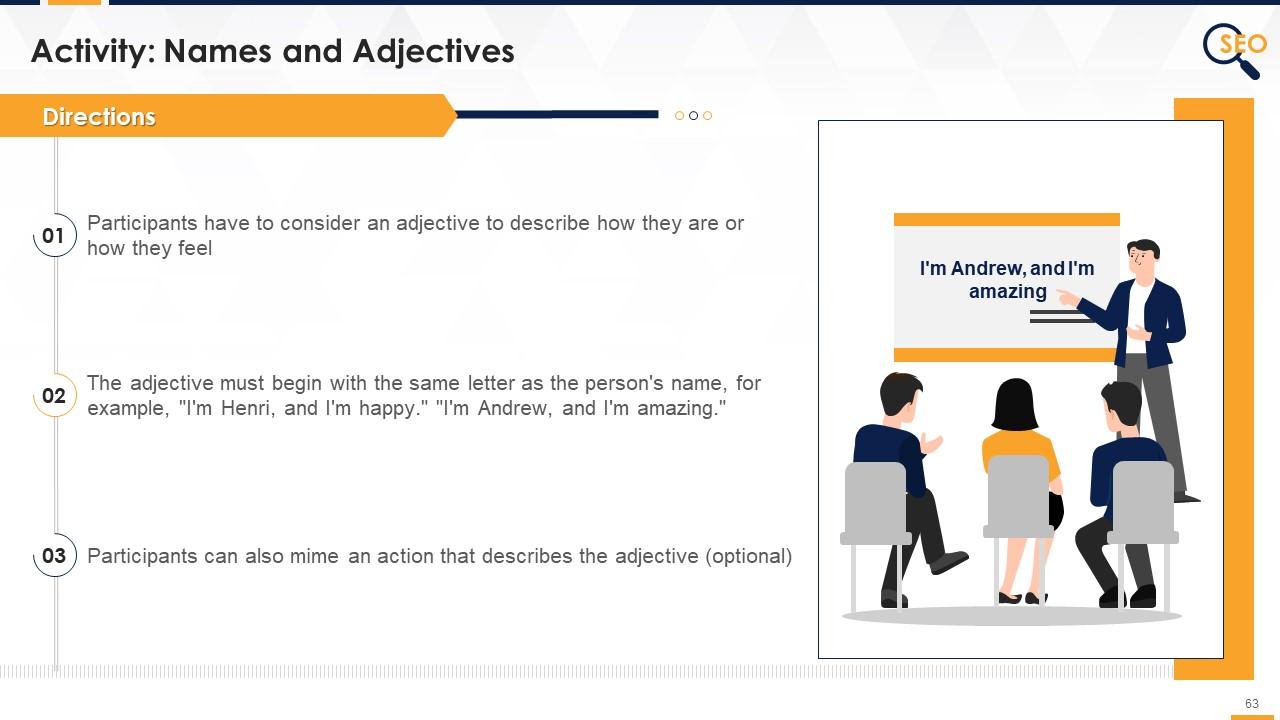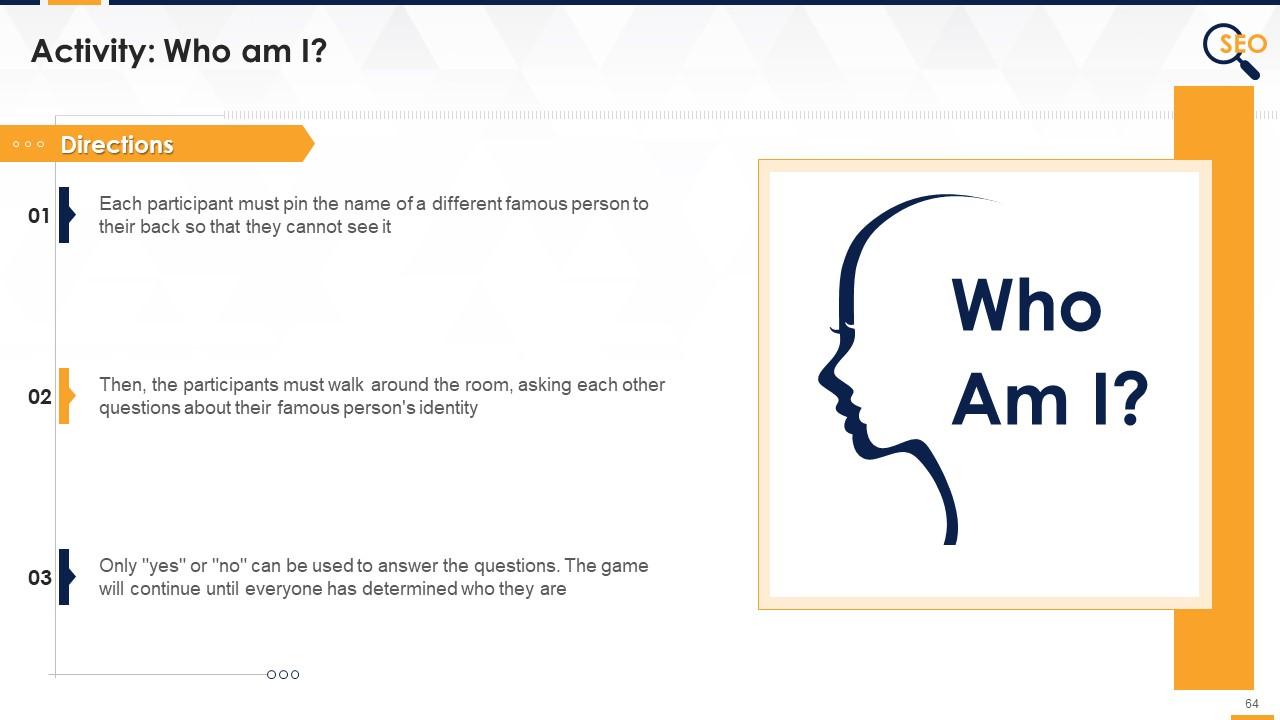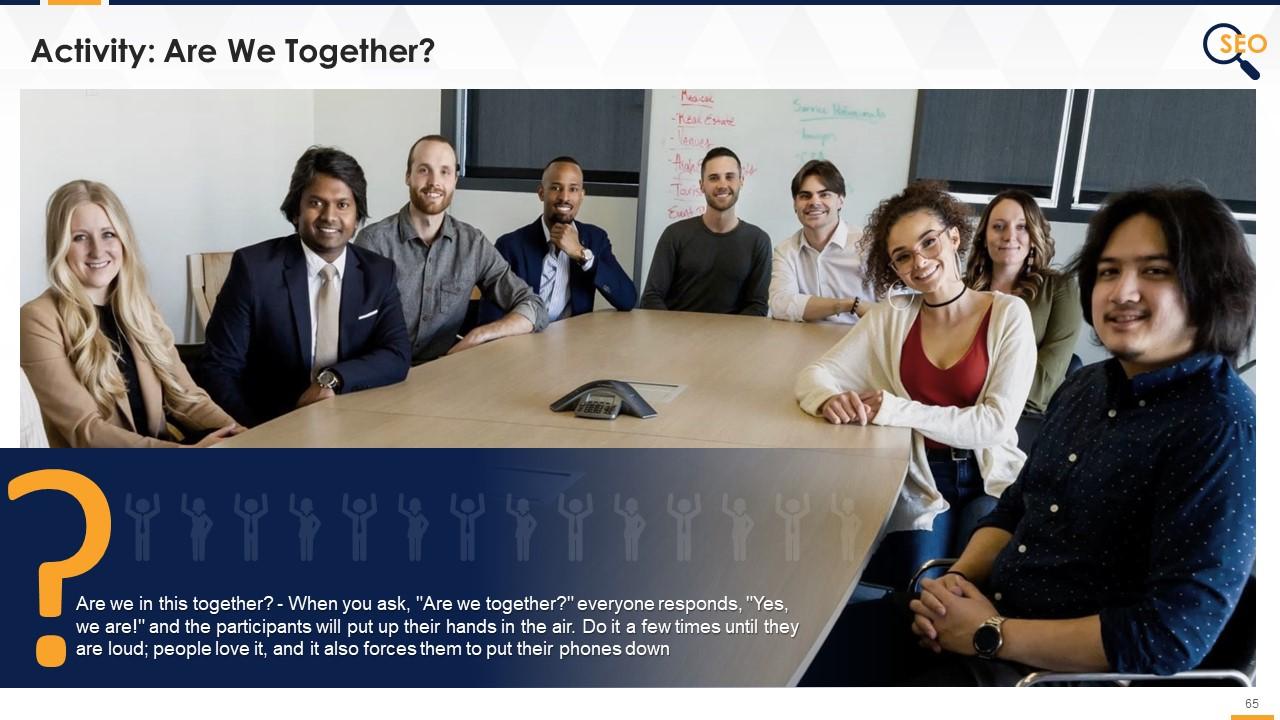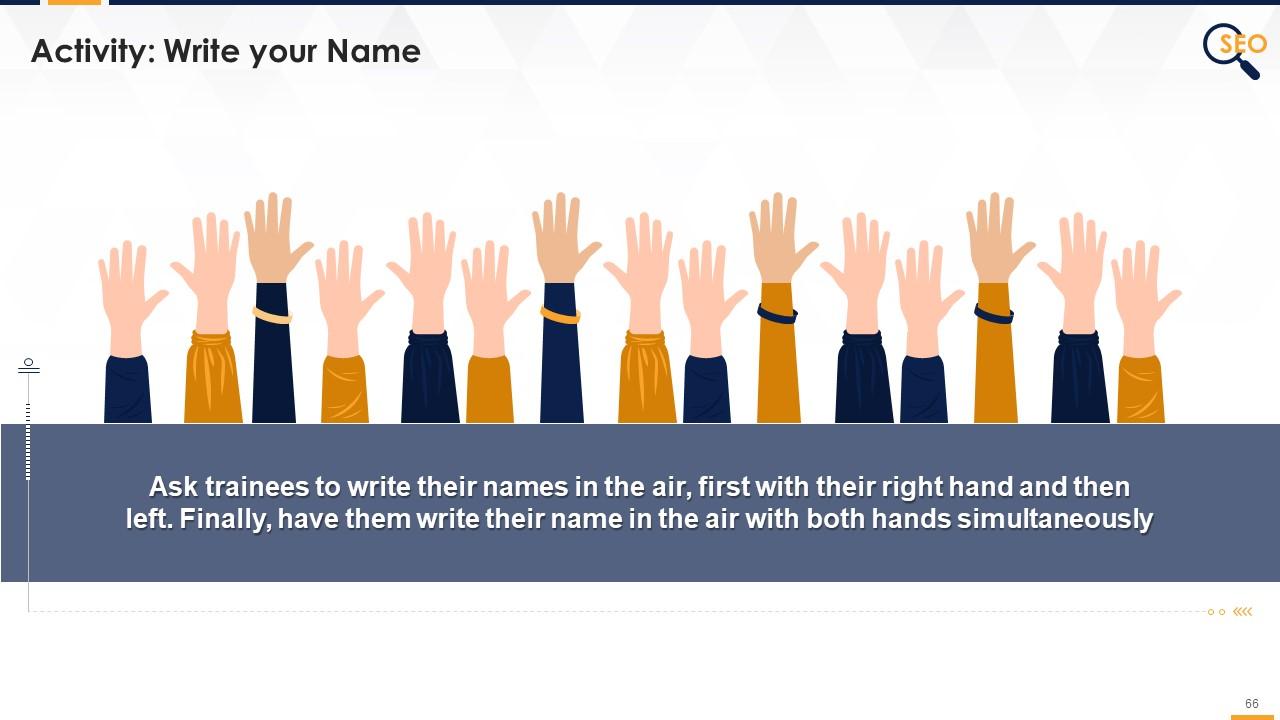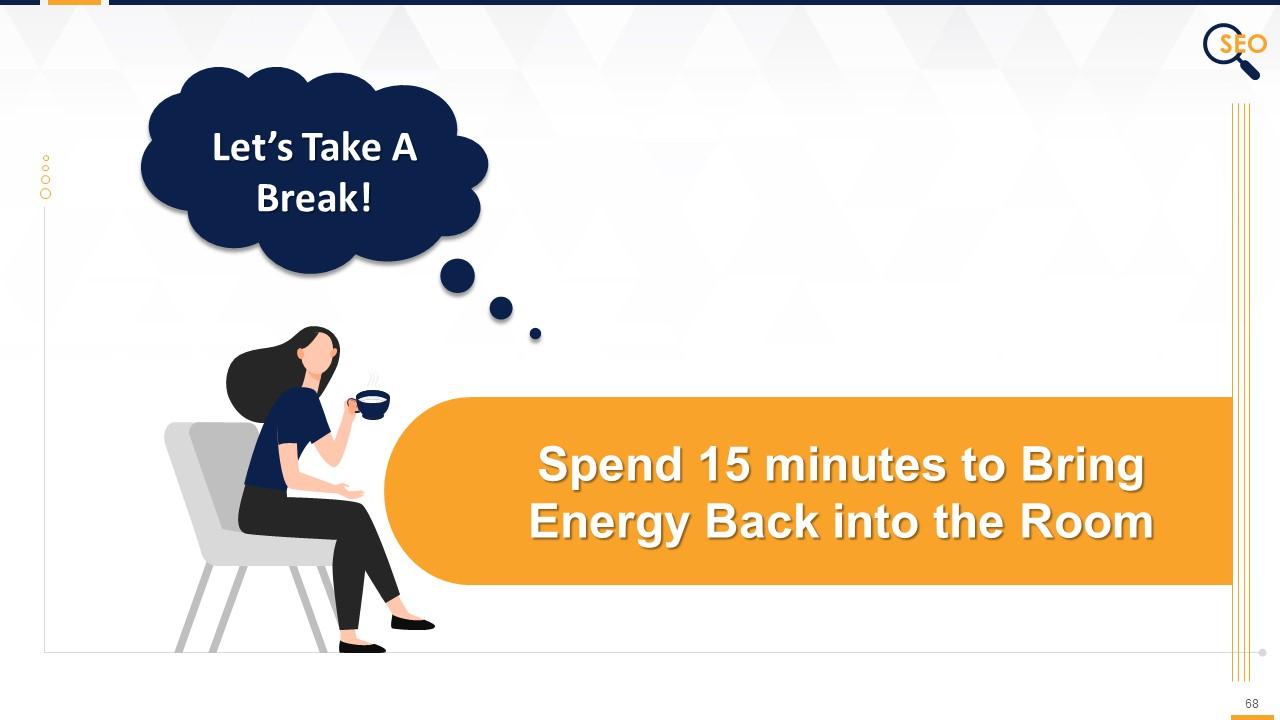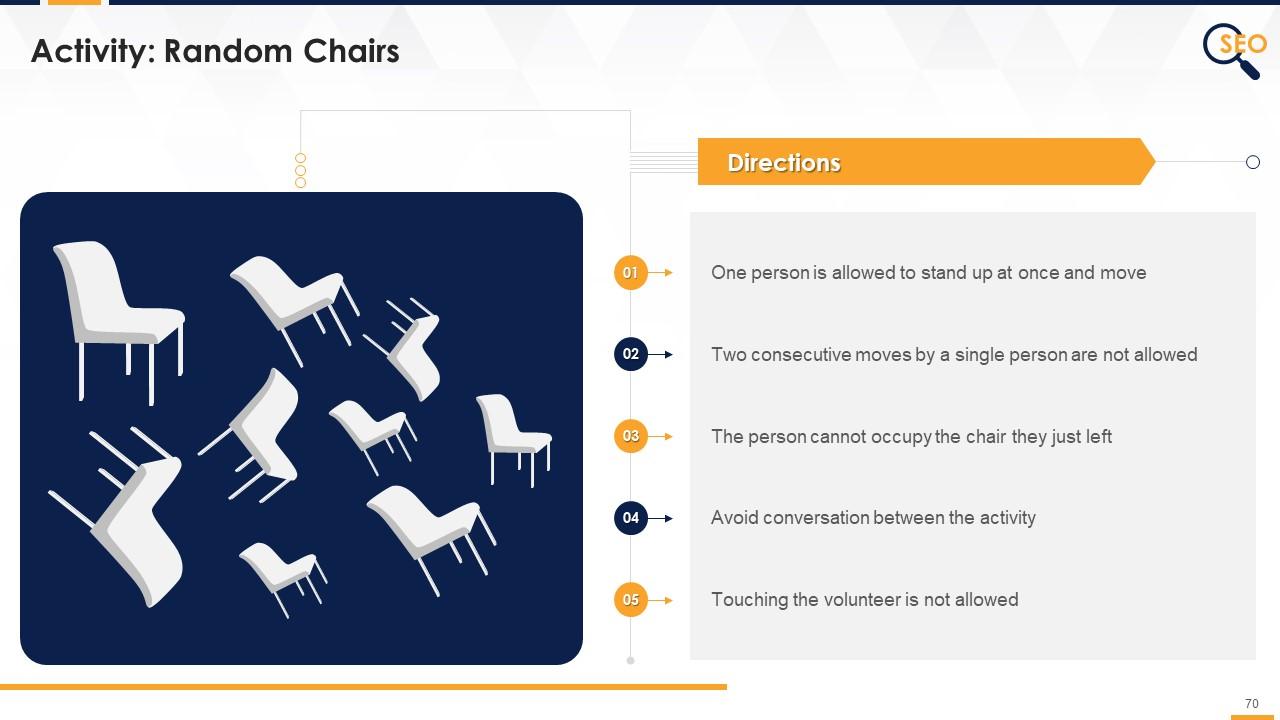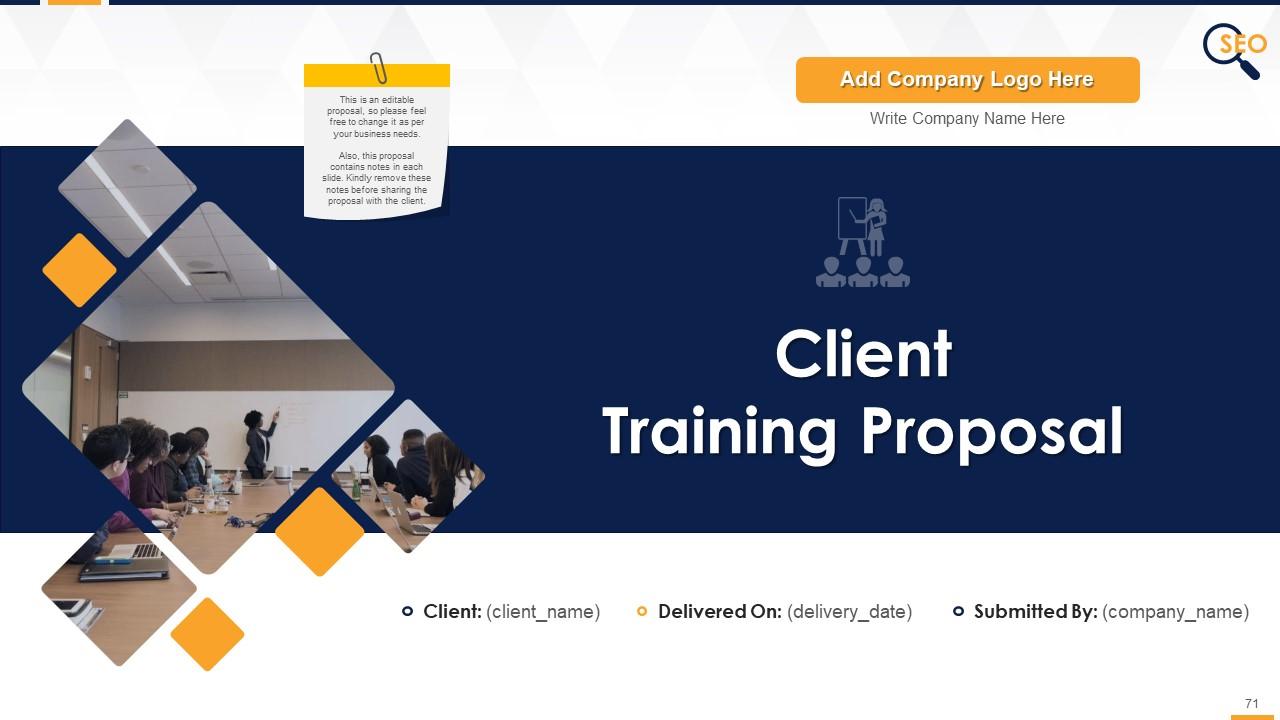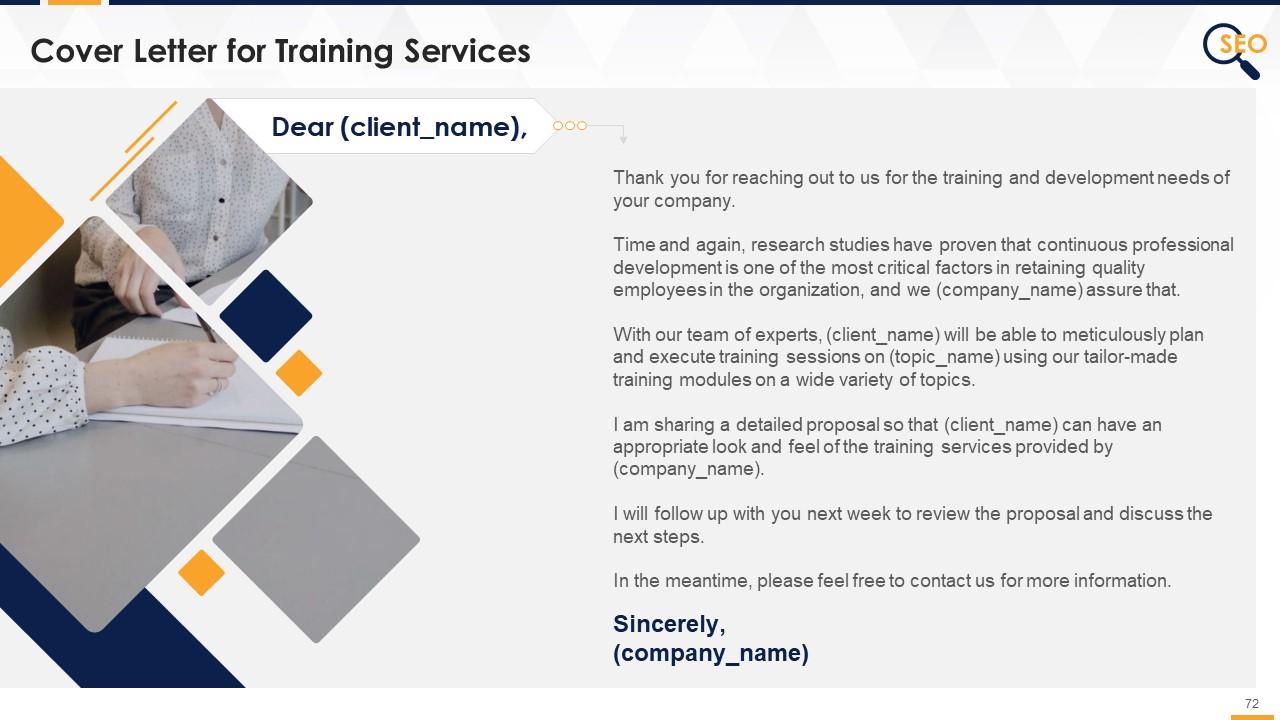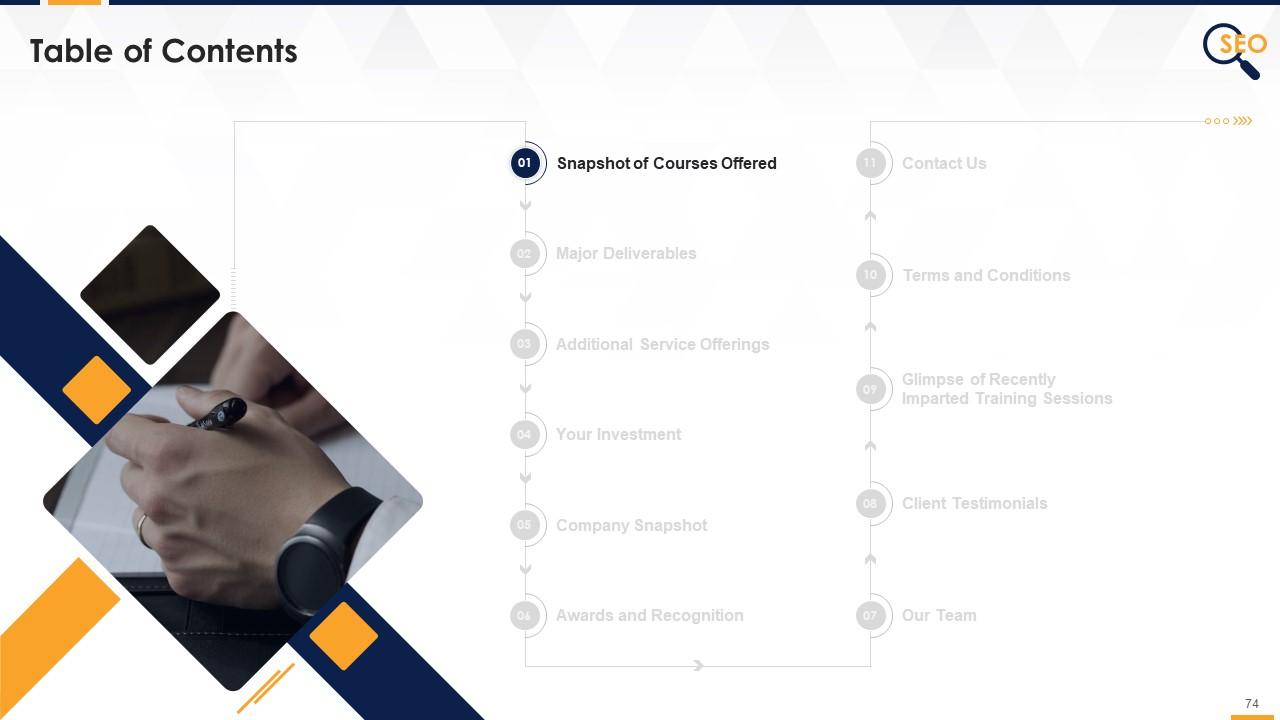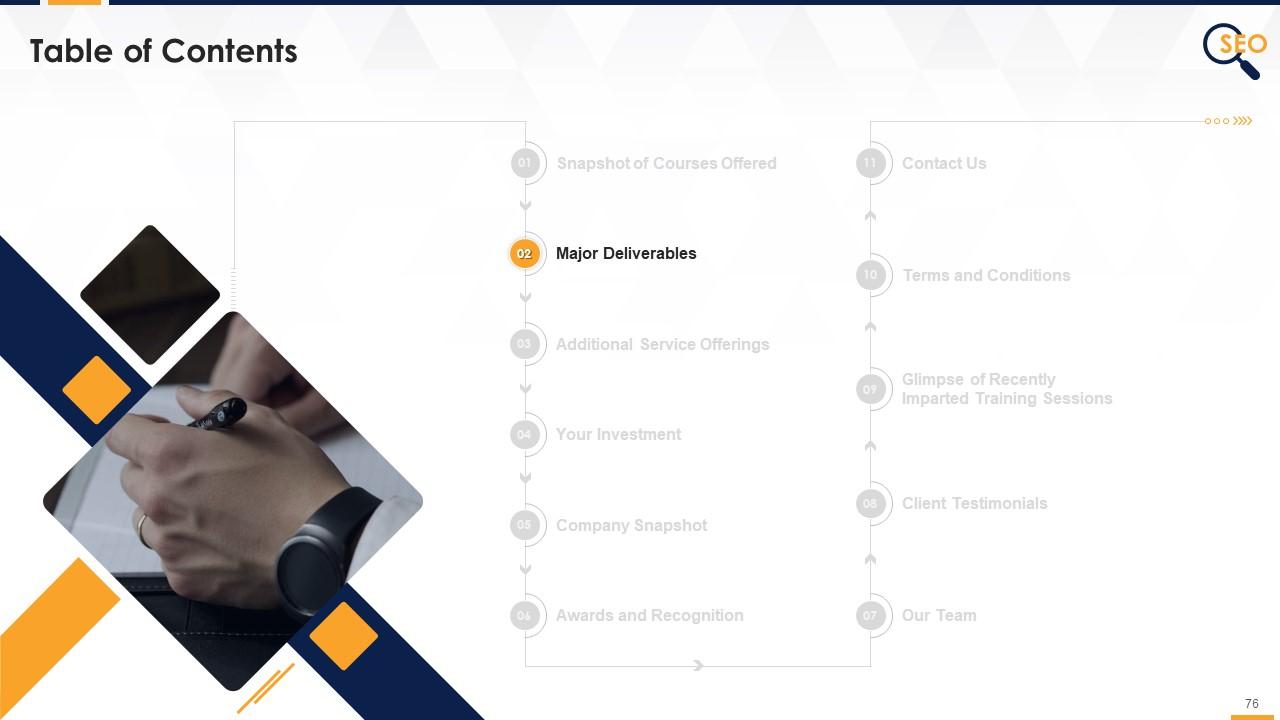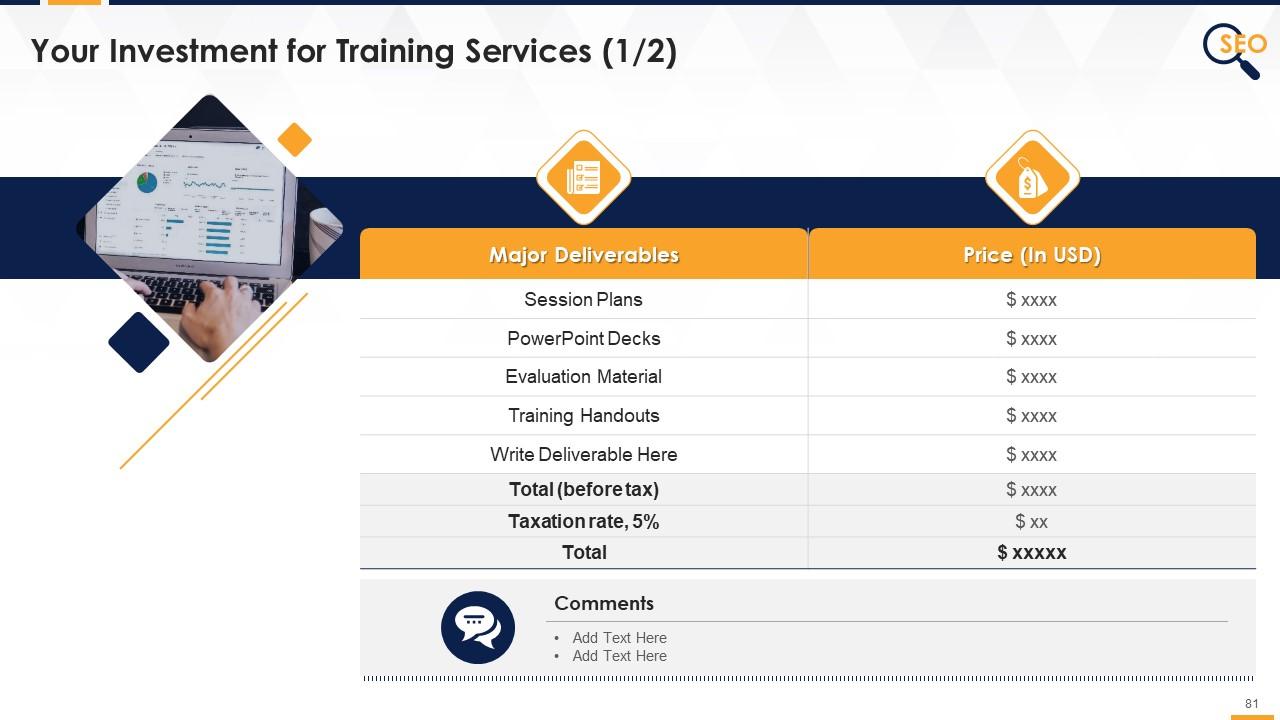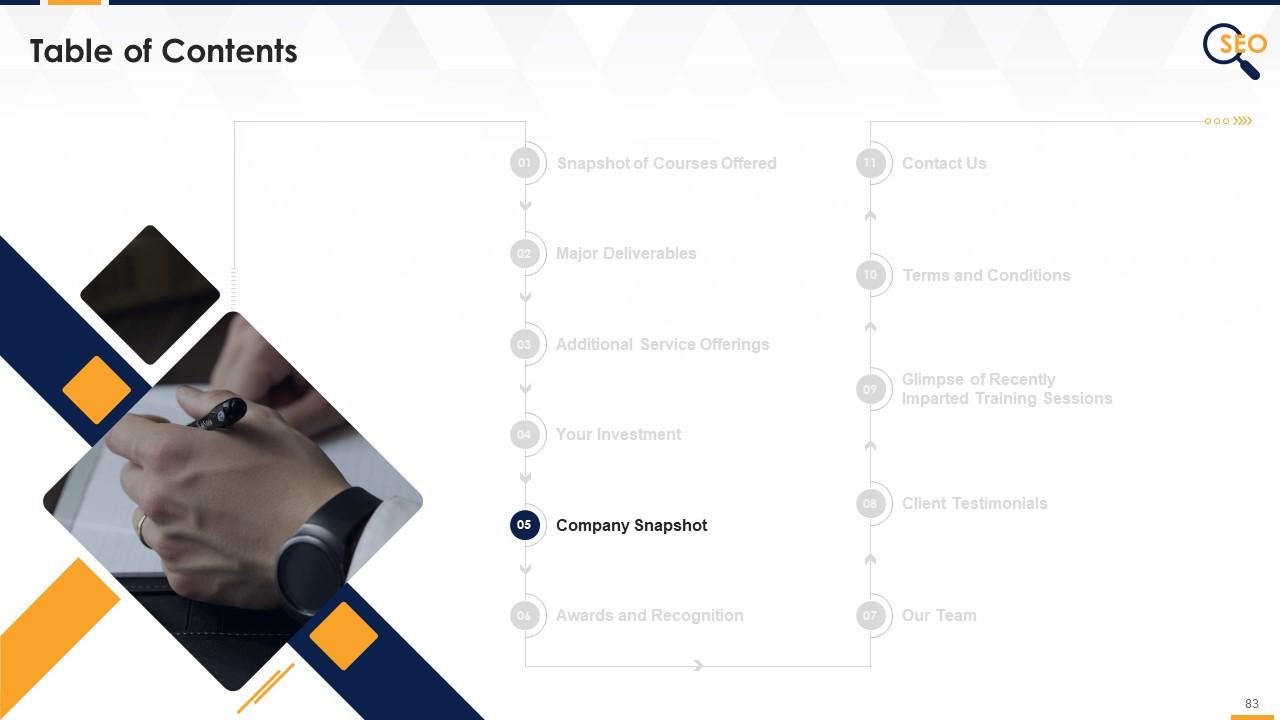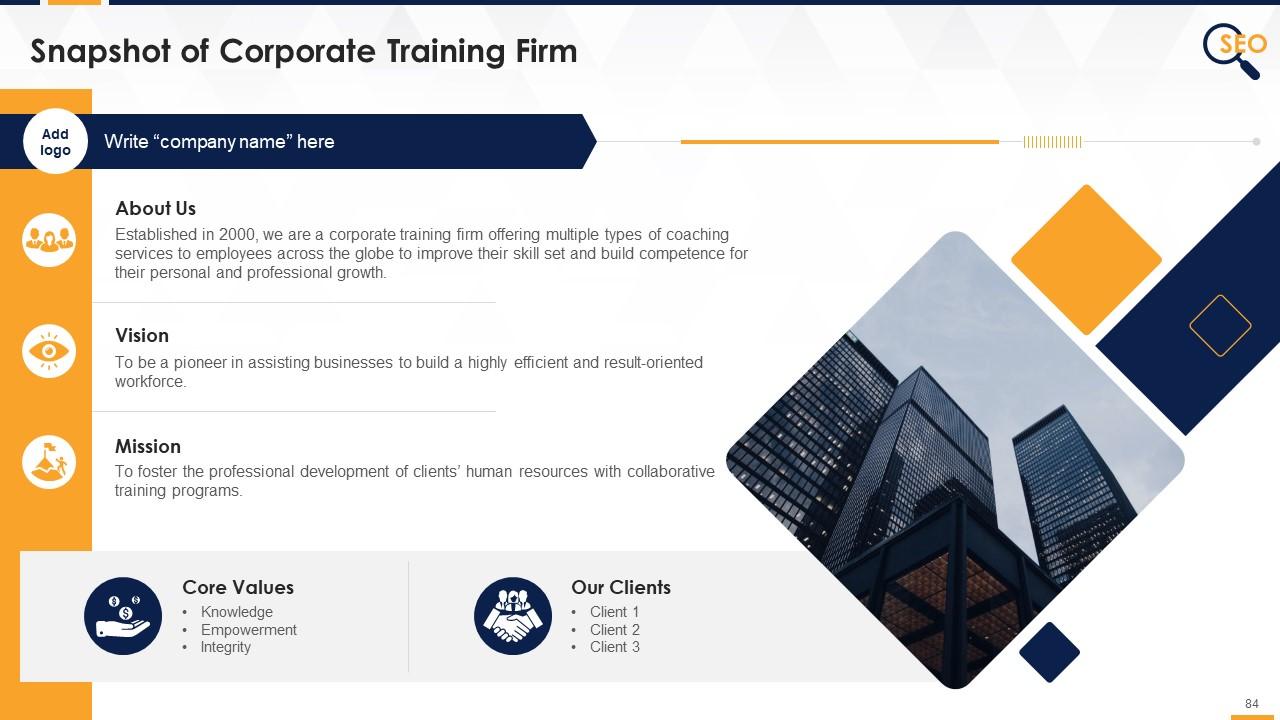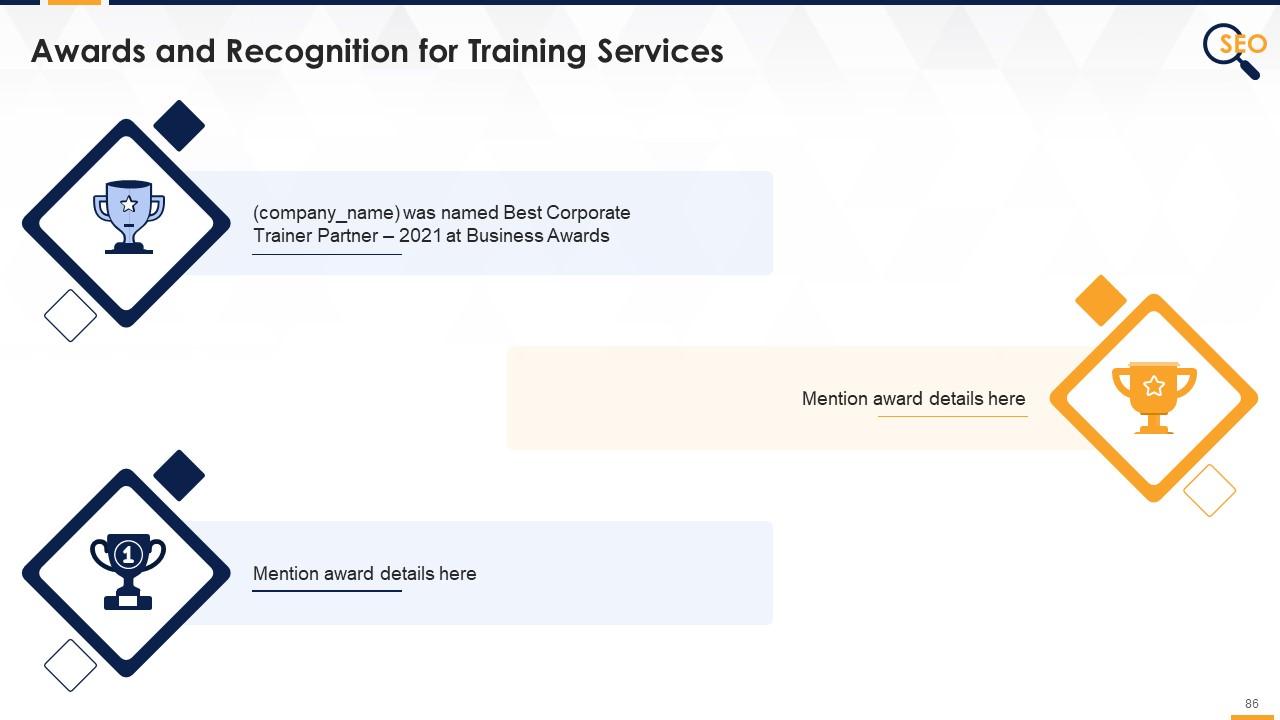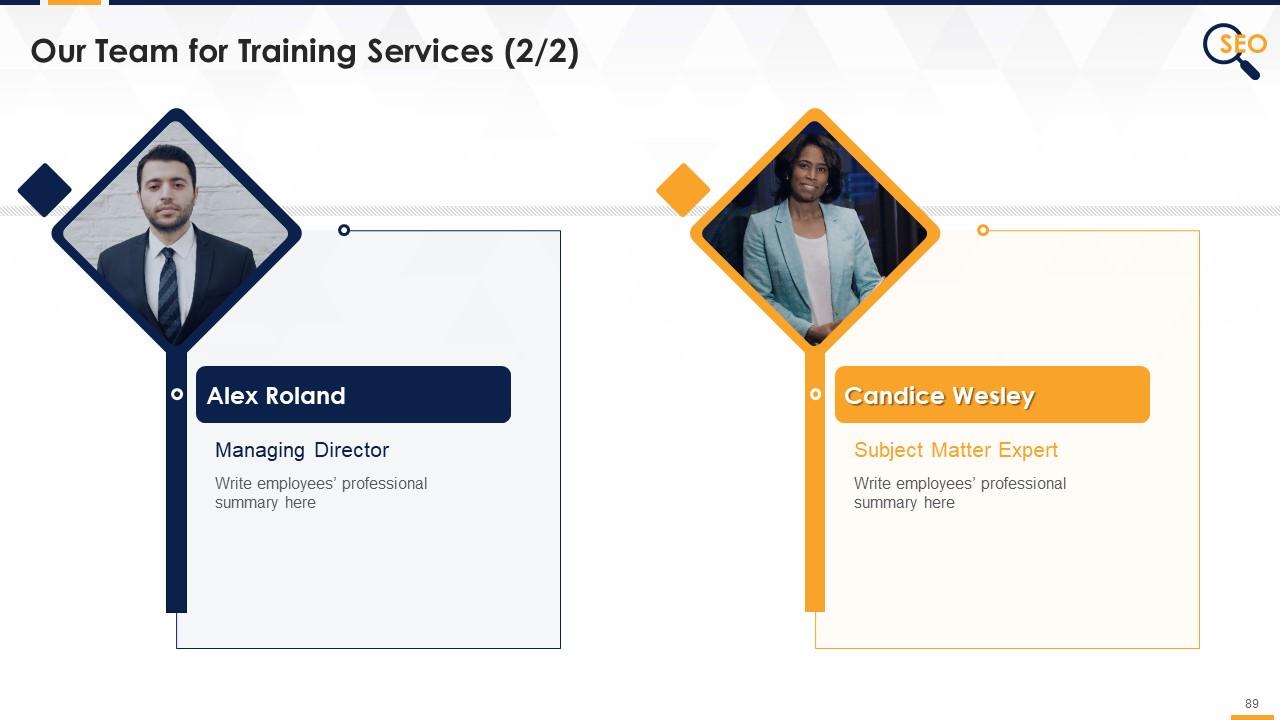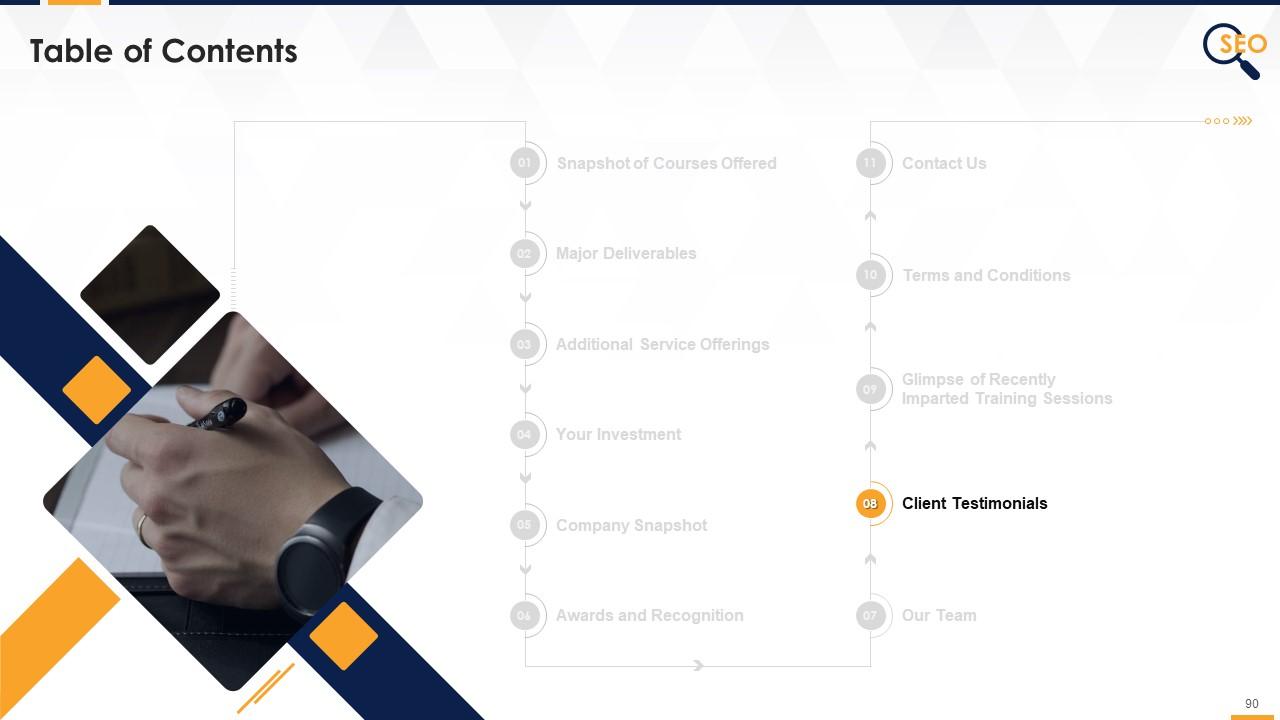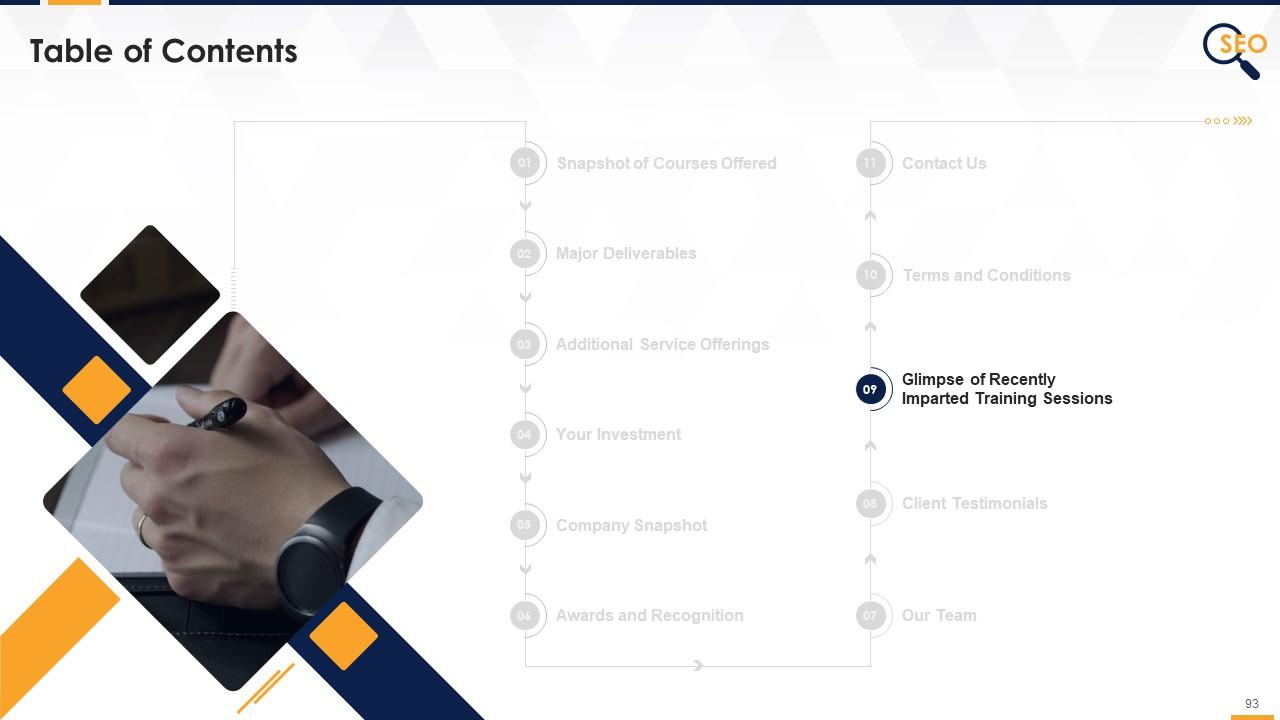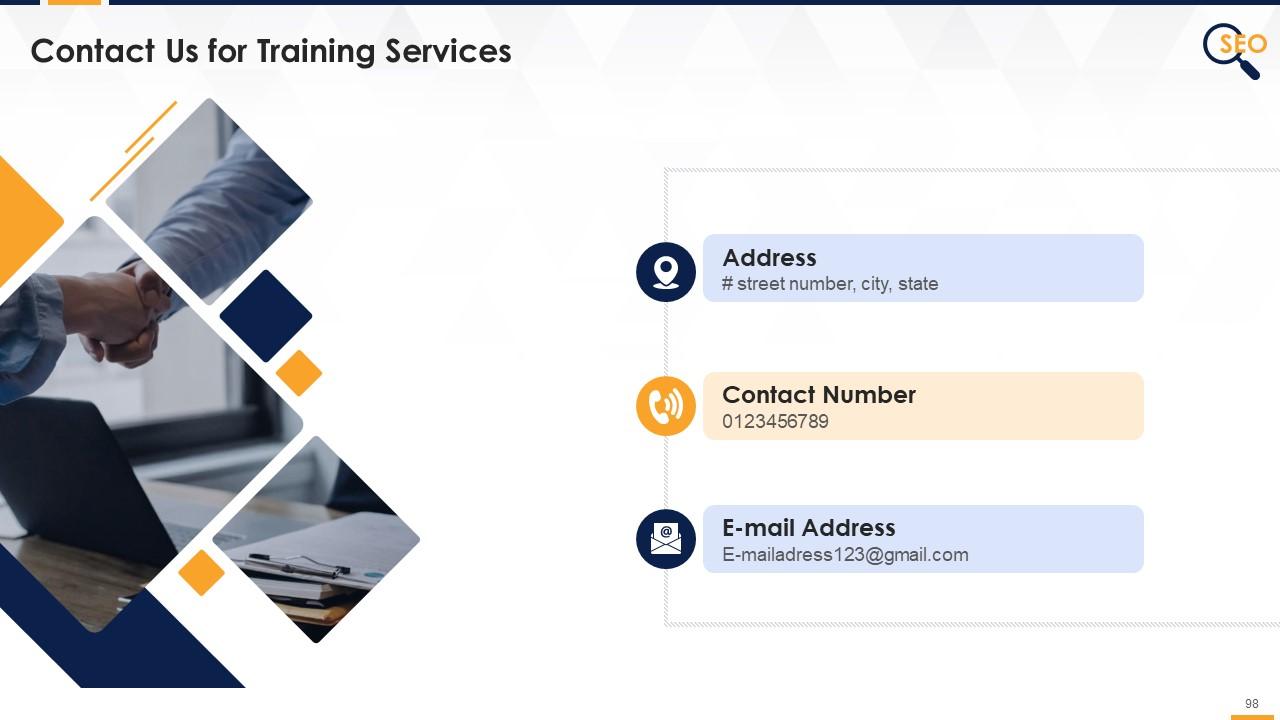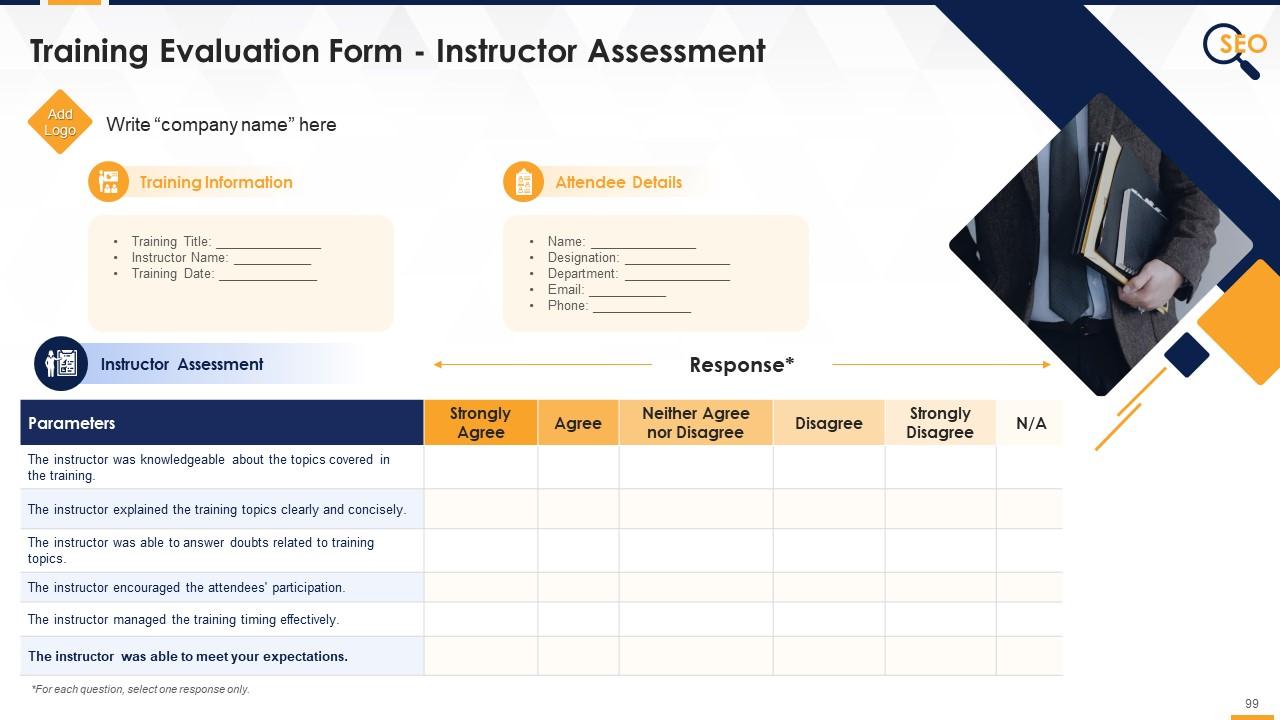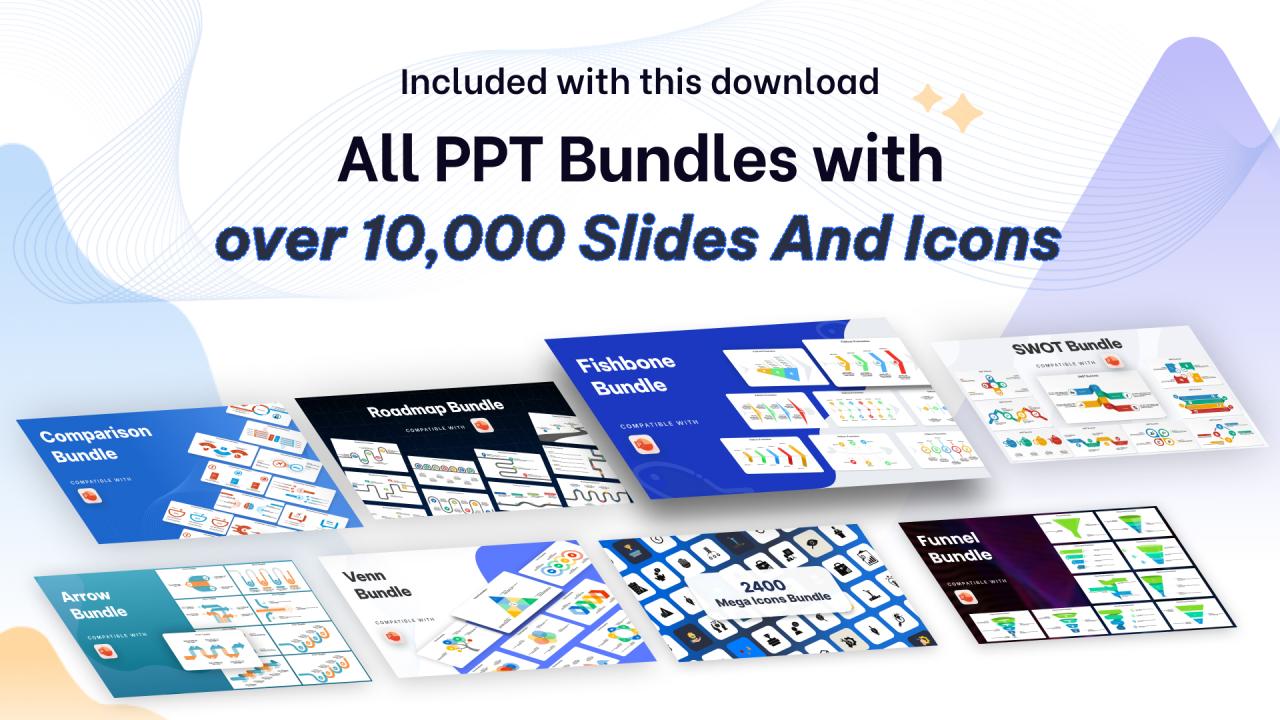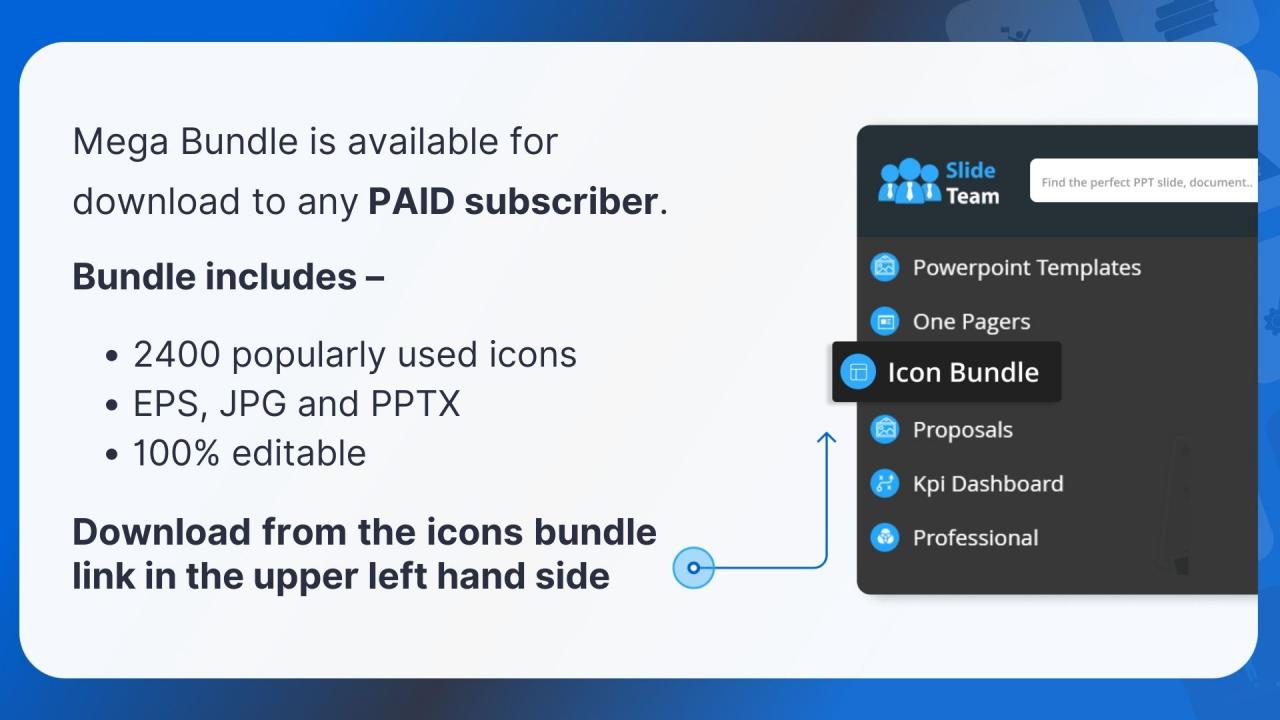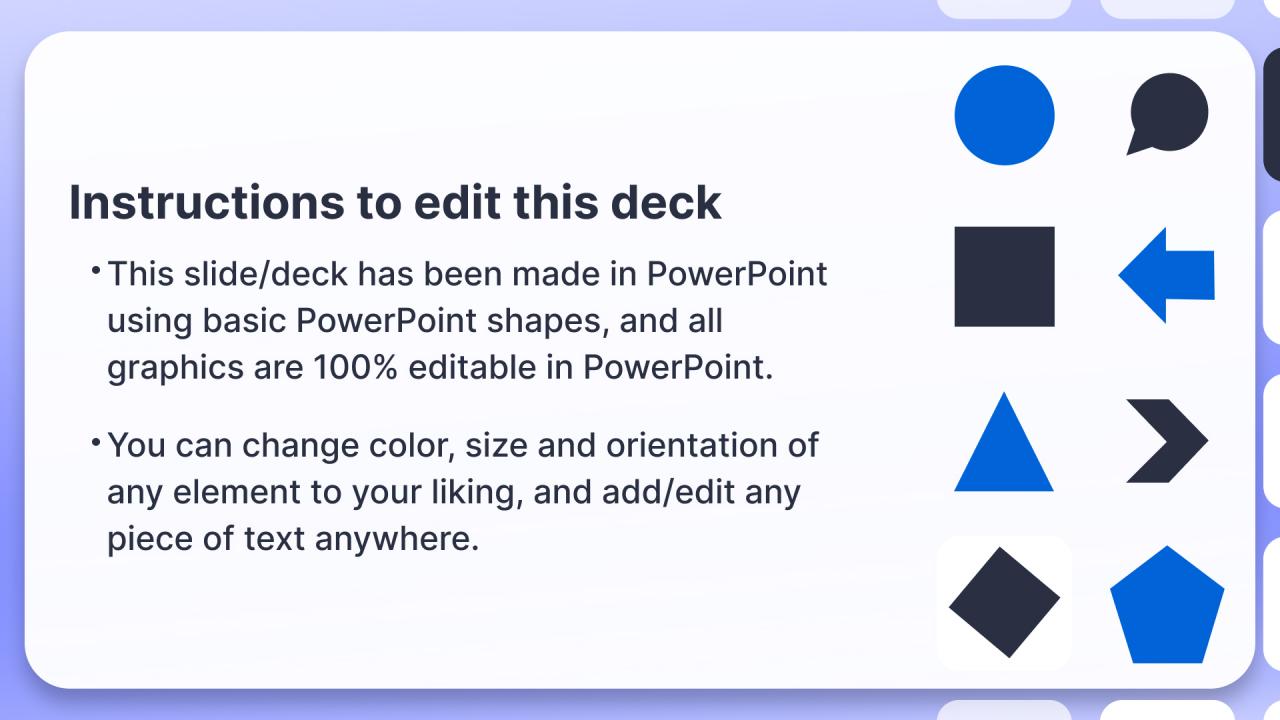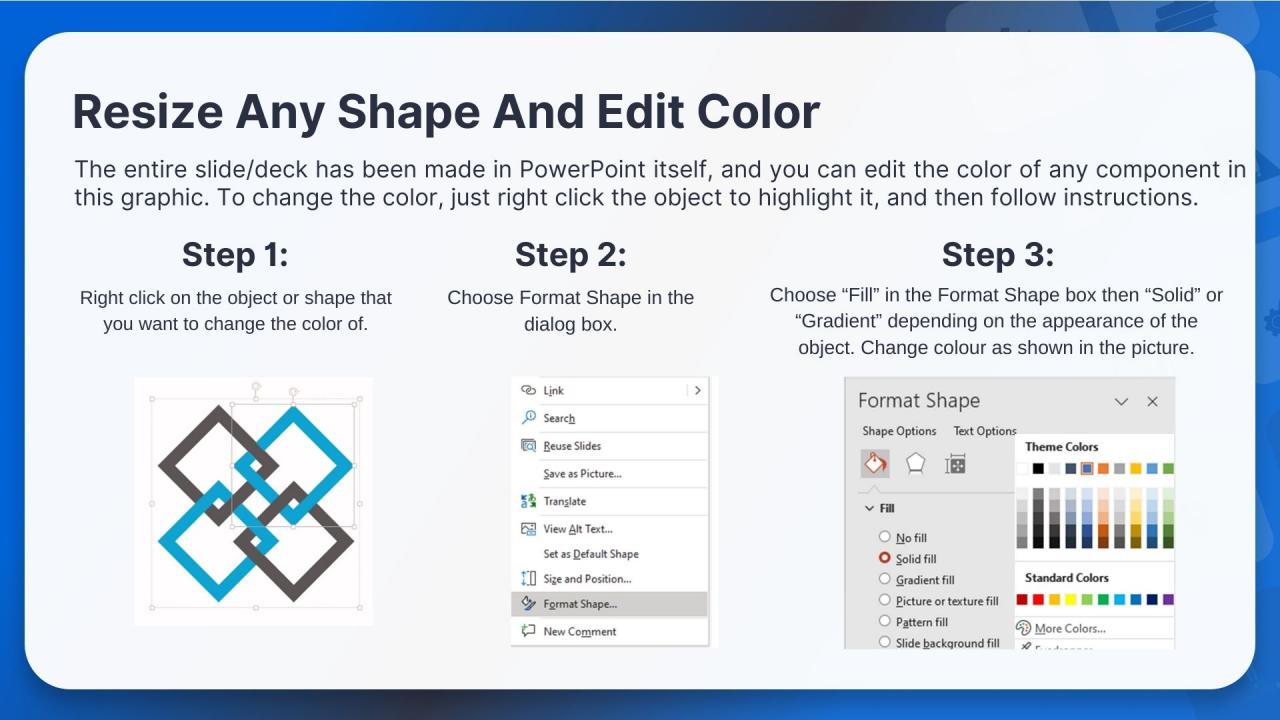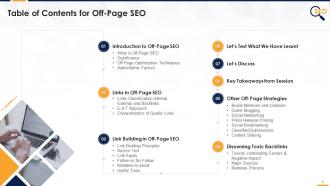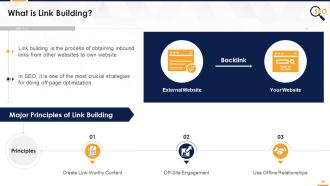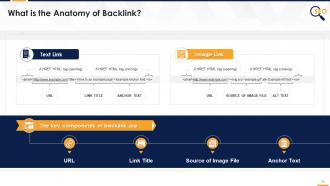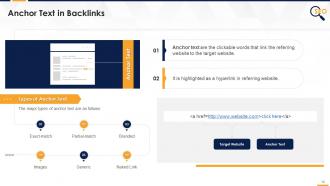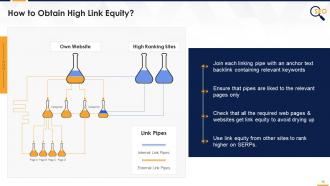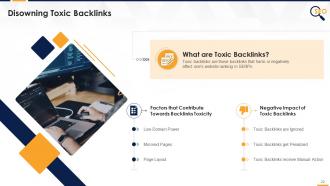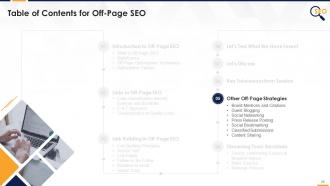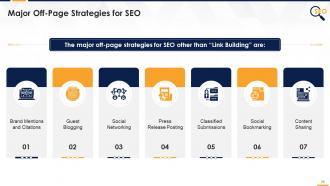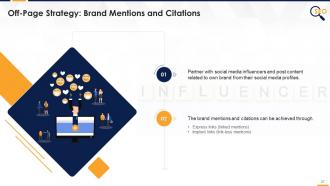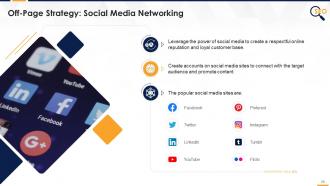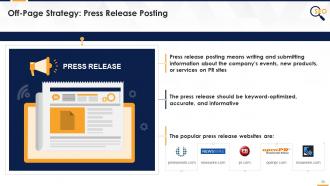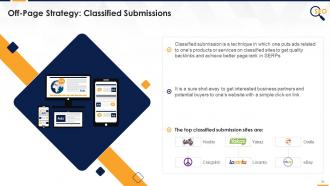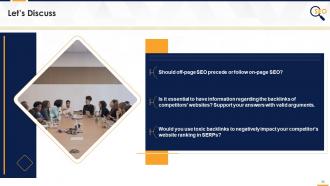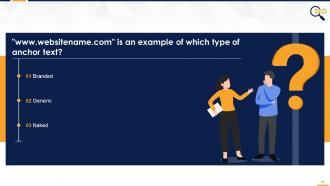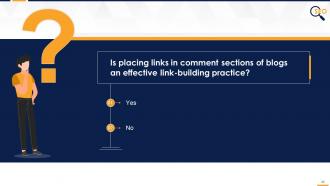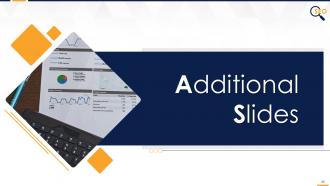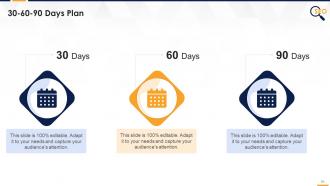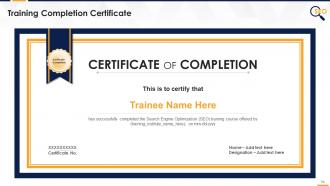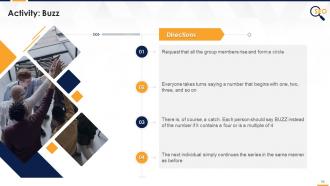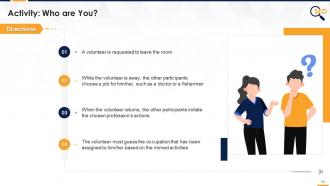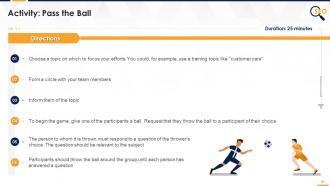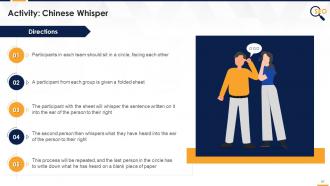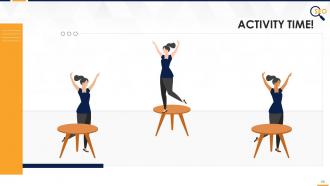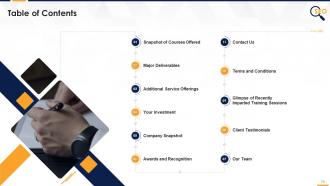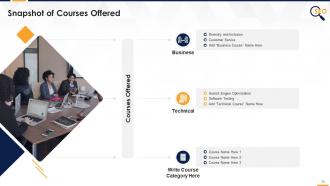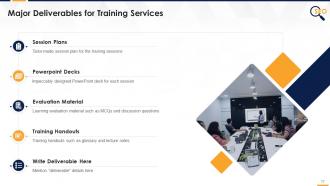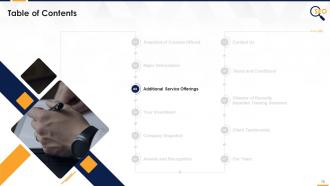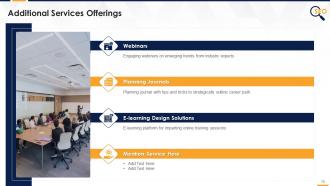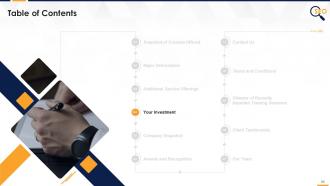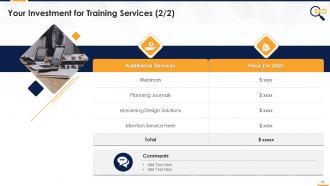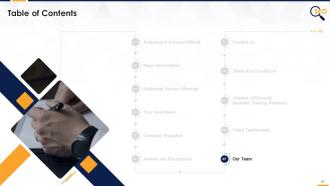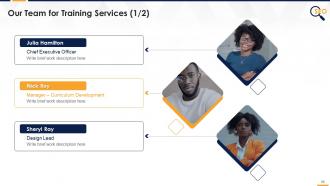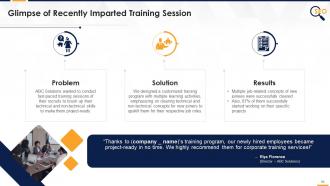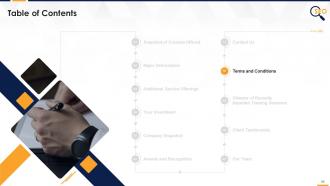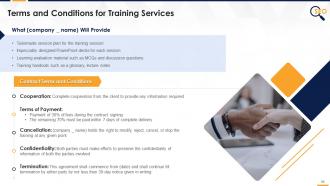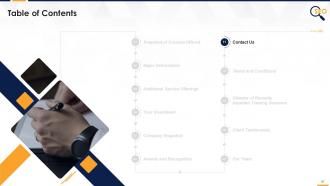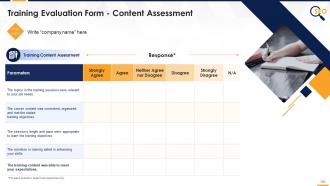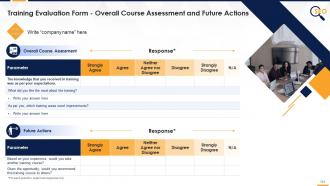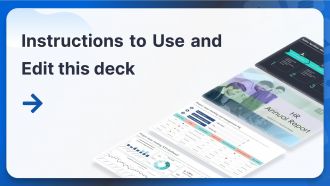Off Page SEO Training Module On Search Engine Optimisation Edu Ppt
This Training Module in-depth covers the Off-Page SEO search engine optimization. The first section of the PPT deck covers Off-Page SEOs significance, multiple optimization techniques, and authoritative factors. Post that, it covers links classification such as internal, external, and backlinks, e-a-t approach and lists down the characteristics of quality links. It also includes information on building quality links in Off-Page SEO with link building principles, anchor text, link equity, follow vs. no follow, etc. The Training Module also includes slides on disowning toxic backlinks. Further, the PowerPoint deck includes Off-Page Strategies such as brand mentions and citations, guest blogging, social networking, press release posting, social bookmarking, classified submissions, and content sharing. It also includes slides for key takeaways to summarize essential points and discussion and multiple-choice questions to make the session more interactive.
This Training Module in-depth covers the Off-Page SEO search engine optimization. The first section of the PPT deck covers ..
- Google Slides is a new FREE Presentation software from Google.
- All our content is 100% compatible with Google Slides.
- Just download our designs, and upload them to Google Slides and they will work automatically.
- Amaze your audience with SlideTeam and Google Slides.
-
Want Changes to This PPT Slide? Check out our Presentation Design Services
- WideScreen Aspect ratio is becoming a very popular format. When you download this product, the downloaded ZIP will contain this product in both standard and widescreen format.
-

- Some older products that we have may only be in standard format, but they can easily be converted to widescreen.
- To do this, please open the SlideTeam product in Powerpoint, and go to
- Design ( On the top bar) -> Page Setup -> and select "On-screen Show (16:9)” in the drop down for "Slides Sized for".
- The slide or theme will change to widescreen, and all graphics will adjust automatically. You can similarly convert our content to any other desired screen aspect ratio.
Compatible With Google Slides

Get This In WideScreen
You must be logged in to download this presentation.
PowerPoint presentation slides
Presenting Training Module on Off-Page SEO. This deck comprises of 101 slides. Each slide is well crafted and designed by our PowerPoint experts. This PPT presentation is thoroughly researched by the experts and every slide consists of an appropriate content. All slides are customizable. You can add or delete the content as per your need. Not just this, you can also make the required changes in the charts and graphs. Download this professionally designed business presentation, add your content and present it with confidence.
People who downloaded this PowerPoint presentation also viewed the following :
Content of this Powerpoint Presentation
Slide 4
This slide provides information regarding the definition of Off-Page SEO. It also contains details regarding the importance of Off-Page SEO.
Instructor's Notes:
Off-Page vs On-Page SEO
- Limited control over the optimization techniques in comparison to On-page SEO
- Requires continuous efforts to achieve consistently good results in the long term
Slide 5
This slide showcases the multiple techniques to perform off-page SEO such as create valuable backlinks, brand mentions and citations, guest blogging, social networking, social bookmarking, forum submissions, press release posting and content sharing.
Instructor's Notes:
The multiple techniques to perform Off-page SEO are as following:
- Create Valuable Backlinks: Create backlinks to our website from quality sources to increase genuineness and trustworthiness
- Brand Mentions and Citations: Reach out to influencers and request them to mention/cite your brand in their online posts for increased visibility
- Guest Blogging: Contribute as a guest author to blogs. Also, focus on blog quality than quantity
- Social Networking: Create a solid presence across multiple social media platforms and regularly post content
- Social Bookmarking: Bookmark website/webpage on popular bookmarking websites to increase online website traffic
- Forum Submissions: Regularly share content in search forums by answering user queries
- Press Release Posting: Submit company articles in high PR article submission directories with website links
- Content Sharing: Share content related to the company, such as pdfs, images, infographics, and videos with website links
Slide 6
This slide depicts the factors affecting rank in off-page SEO such as quality backlinks, author rank, link profiles, quality content and relevance.
Instructor's Notes:
The key factors that affect the ranking in Off-page SEO are as following:
- Quality Backlinks: Always try to get backlinks from websites with high domain authority
- Author Rank: It refers to the score given by search engines to the content’s author. It is advisable to seek backlinks from reputed authors with a higher rank
- Link Profiles: Avoid linking to spammy websites. Because if identified, search engines penalize for doing so
- Quality Content: Always write high-quality content as it increases the chances of others liking & sharing it. Hence it naturally obtains backlinks for the website
- Relevance: Ensure that backlinks obtained are highly relevant to business and not manipulative. Otherwise, it will attract penalties from search engines
Slide 8
This slide provides information regarding the major types of links in Off-page SEO such as internal, external, and backlinks.
Instructor's Notes:
The major types of links in Off-Page SEO are as follows:
- Internal Links: When link is created to navigate from one webpage to another webpage on the same website, without leaving the original domain
- External Links: When link is created to navigate from one website to a completely new website, outside the original domain
- Backlinks: When a link from an external website directs back to own website
- They do reverse of what external links do
- They are further segregated into the following types:
- Natural Backlinks: When backlinks are obtained without any effort, primarily due to superior quality content of our website
- Manual Backlinks: When the backlinks are obtained with considerable efforts by reaching out to other website owners & bloggers to link and feature our webpage on their website
- Self-created Backlinks: When the backlink is created by leaving own website links in comment sections of another website.
Slide 9
The purpose of this slide is to provide an overview of the E-A-T concept used in search engine optimization. It also includes details regarding its significance in building links in Off-Page SEO.
Instructor's Notes:
E-A-T Concept:
The E-A-T focus on
- E - The Expertise of the creator of the main content
- A - The Authoritativeness of the creator of the main content, the main content itself, and the website
- T - The Trustworthiness of the creator of the main content, the main content itself, and the website
Slide 10
This slide indicates the major features of high-quality backlinks in off-page SEO. The key characteristics discussed are relevance, authority, directs traffic, and uniqueness.
Instructor's Notes:
The primary characteristics of high-quality links are as following:
- Relevance: The good inbound links are highly relevant to the category. Their referring source's niche is the same as the website seeking them
- For example, If one has a fitness blog, its inbound links should be from the nutrition, fitness accessories, etc., websites
- Authority: A good link referring website/webpage has a high domain/page authority
- Directs Traffic: A good backlink drives traffic to the website seeking them by providing the customers correct information that they are searching online
- Uniqueness: A good link is unique in the following context:
- In terms of referring sources, they are sought from
- For example, if a website has five backlinks, they all should be from 5 distinct sources
- Also, in terms of how many backlinks a particular referring source is generating
- As a website generating more backlinks is less valuable than one generating only a few
- Social Media Signals: A good backlinking website has high popularity on social media in terms of the number of likes, shares, and retweets
Slide 12
This slide provides information regarding the definition of link building. It also includes details of major principles to be followed to build efficient links in Off-page SEO.
Instructor's Notes:
The important link building principles are:
Principle 1: Create Link-Worthy Content
- In SEO, content is king
- Always ensure that website content is informative and updated so that internet users want to read and share it
- By doing so, the website will automatically get natural backlinks
Principle 2: Off-site Engagement
- Actively engage with others through social media, guest blogging, by posting comments, and sharing their website links
- This is so that when they link out, they must then proactively approach you
Principle 3: Use Offline Relationships
- Reach out to your network (colleagues, friends & family) and ask them to promote your website links on their social media profiles, blogs, or websites
Slide 13
The purpose of this slide is to provide an overview of Anatomy of text and image Back Links in Off-Page SEO.
Instructor's Notes:
The key components of backlink are:
URL: It provides information regarding the website address to which the backlink is referring
Link Title: It provides additional details about the webpage to which the website is being linked
Source of Image File: It provides details from where the image/infographic is taken
Anchor Text:
- It is the text around which the URL is wrapped
- It is a clickable text to move from one referring website to another website
Slide 14
This slide illustrates the anchor text in backlinks. It also contains details of major types of anchor text such as images, generic, naked link, branded, partial-match, and exact-match.
Instructor's Notes:
The major types of anchor texts are as follows:
- Exact-match: When an anchor text contains precise keywords that provide information regarding the page linked to
- For example: "antivirus" linking to a page that shows the most recommended antiviruses
- Partial-match: When an anchor text along with the main keyword contains some phrases
- For example: "Buy running shoes" linking to a website showcasing new models of running shoes
- Branded: When a specific brand name is used as anchor text
- For example: 'Microsoft' linking to a blog post about the company
- Naked link: Whenever a URL is used as an anchor text
- For example: "www.microsoft.com" is a naked link anchor
- Generic: Whenever generic words are used as the anchor text
- For example:
- Click here
- This blog
- Read more
- More info
- For example:
- Images: When text contained in the image's alt attribute is used as anchor text to link the image
Slide 15
This slide provides information regarding the link juice and multiple factors that determine the link's actual value, such as relevancy, authoritativeness, anchor text, following, domain quality, link location and quantity on page, and HTTPS status.
Instructor's Notes:
The multiple factors that play a significant role in determining the actual value of link are as follows:
- Relevancy: The linking page should be highly relevant to the core business of the website to which it is being linked
- For example, if a page about shoes is linked to the cooking website, it will not provide much authority and value as the link is irrelevant
- Authoritativeness: Links from old and trusted websites with high authority pass higher link equity than those obtained from new websites
- Anchor Text: Appropriate keywords in backlink fetch high link equity
- For example, if the backlink anchor text has similar keywords that are used to improve the ranking of the source page, it shows the search engine that both are related, and, hence, backlink is valued more
- Following of Link: Links with no-follow are overlooked by search engine crawlers and don't pass equity. Hence, they must be avoided while creating backlinks
- Domain Quality: Links obtained from website/webpage with high Domain Authority and Page Authority (70 out of 100) offer higher equity
- Link Location on Page: Links placed in the footer or a sidebar carry low weightage in contrast to the links in the body of a page's content
- Links Quantity on Page: If numerous other websites use the same link, then it dilutes the equity. It is recommended to use the link which is not overused
Slide 16
This slide provides an overview of the process to obtain link equity from websites to rank higher in SERPs (search engine results pages).
Slide 17
The purpose of this slide is to provide an information regarding the Do-Follow and No-Follow Backlinks in Off-Page SEO.
Slide 18
This slide tabulates the key differences of follow and no-follow links in terms of site crawling, link equity transferred, applications, and benefits.
Slide 19
This slide provides an overview of mistakes to avoid while creating backlinks in Off-Page SEO such as linking to sites with low authority, buying/selling paid links, using inappropriate keywords in anchor text etc.
Slide 20
This slide provides information regarding the key software suites that can be deployed to manage backlinks in Off-page SEO effectively. It also contains details of the critical features of each software. The major software suites listed are Ahrefs, SEMrush, Moz, and SE Ranking.
Slide 22
This slide provides information regarding the backlinks and multiple factors that contribute towards their toxicity. It also contains details regarding their harmful impact.
Instructor's Notes:
The major factors that increase the backlinks toxicity are:
- Low Domain Power: It is calculated as the ratio of Trust Score to Domain Authority
- Trust Score refers to the number of backlinks pointing towards a domain from trusted sites
- Domain Authority is a metric to predict the likelihood of a website to appear in higher ranks in SERPs
- A low ratio indicates that the website's Domain Authority may have been inflated artificially
- Mirrored Pages: When identical pages on multiple sites link to one's domain using the same anchor text, it is called mirrored pages
- Page Layout: When the visible text to HTML ratio is low, it indicates that the linking page has poor quality
The Negative Impacts of Toxic Backlinks are listed below:
- Toxic Backlinks are Ignored: Search engine ranking algorithms ignore the toxic backlinks, leading to the wastage of time and resources
- Toxic Backlinks get Penalized: Search engines penalize websites using toxic backlinks by decreasing their ranking in the SERPs for specific search keywords or de-indexing them
- Toxic Backlinks receive manual action: Websites using toxic backlinks also receive warning actions when the search engine web spam team reviews the website's link profile and finds many toxic backlinks
Slide 23
The purpose of this slide is to highlight the major types of toxic Backlinks such as links from spammy websites, link-mill websites, unrelated industry websites, discussion forum and blog comment links and PR release links.
Instructor's Notes:
The backlinks from the following sources must be avoided as they are toxic and can attract penalties from search engines.
- From Spammy Websites: Backlinks from spammy sites such as pornography, pharmaceuticals, and online gambling, etc.
- From Link-Mill Websites: Backlinks from paid link schemes. Although they offer high volume backlinks in a short span of time, they have poor quality and are toxic
- From Unrelated Industry Websites: Avoid toxic backlinks from unrelated industry websites. For example, if one has a restaurant, then the restaurant's website should obtain backlinks from chefs, food critics, etc.
- Discussion Forum and Blog Comment Links: Search engines now have increased AI and natural language processing capabilities, so they can easily detect if it is conversation or broadcast happening in the forum. Hence, backlinks pasting in discussion forum and blog comment should be avoided
- PR Release Links: PR webpages with dozens of irrelevant keywords as they can attract penalties from search engines
Slide 24
The purpose of this slide is to highlight the multistep process to remove toxic backlinks.
Instructor's Notes:
The major steps to remove toxic backlinks are:
- Step 1: Identify types of the toxic backlinks to avoid, such as links from
- Pornography, pharmaceuticals, and online gambling sites
- Paid link schemes
- Unrelated industry websites
- Step2: Find Source of toxic backlinks using backlinks management tools such as Ahrefs, SEMrush, Moz, and SE Ranking. Once identified, export details of toxic backlinks in CSV file to further investigate
- Step 3: Find out the details of the company hosting the website with toxic backlinks using tools such as "WhoIsHostingThis". Then email the concerned person and request to remove the toxic backlink
- Step 4: If the person concerned doesn't respond, use Google's 'Disavow Links' tool to remove toxic backlinks by informing it to ignore all the links from a specific domain
Slide 26
This slide showcases the major off-page SEO strategies such as brand mentions and citations, guest blogging, social networking, press release posting, classified submissions, social bookmarking, and content sharing.
Slide 27
This slide provides information regarding the off-page strategy of brand mentions and citations. It also includes information regarding the express links and implied links in brand mentions.
Slide 28
This slide provides information regarding the guest blogging off-page SEO technique.
Slide 29
This slide provides information regarding the social media networking technique for off-page SEO. It also includes details of popular social media site such as Facebook, Twitter, LinkedIn, YouTube, Pinterest, Instagram, Tumblr, and Flickr.
Slide 30
This slide provides information regarding the press release (PR) submission technique for off-page SEO. It also includes details of popular press release websites such as prnewswire.com, newswire.com, pr.com, openpr.com, and issuewire.com.
Slide 31
This slide provides information regarding the classified submissions technique for off-page SEO. It also provides details regarding the major top classified submission sites such as Hoobly, Craigslist, Yakaz, Locanto, Oodle, and eBay.
Instructor's Notes:
A classified ad has three main parts:
- Headline: It should have relevant keywords and must be short & catchy to grab readers’ attention & invoke interest
- Business Details: It consists of a brief description of the products and services offered by the business
- Contact Information: A call-to-action button to redirect potential customers to the business website
Slide 32
This slide provides information regarding the social bookmarking technique for off-page SEO. It also provides information regarding the major social bookmarking sites such as Reddit, Google Bookmarks, Stumbleupon, Newsvine, Pinterest, and Twitter.
Slide 33
This slide provides information regarding the content sharing technique for off-page SEO. It also provides information regarding the major content types to share such as text, videos, images, and infographics.
Slide 35
The purpose of this slide is to showcase the summary of the off-page SEO session. It includes information regarding multiple off-page SEO techniques, major types of links, link equity, and toxic backlinks.
Slides 55 to 70
These slides include multiple energizer activities to break the monotony of training sessions and actively engage trainees. The energizer activities are as follows:
- Buzz
- Red Nose
- Don’t Answer
- Who are You?
- The Name Game
- Pass the Ball
- Genie in a Bottle
- Names and Adjectives
- Who am I?
- Are We Together?
- Write your Name
- Chinese Whisper
- Random Chairs
Slide 72
This slide highlights the cover letter for the training proposal. It includes details regarding what the company providing corporate training can accomplish for the client.
Slide 75
The purpose of this slide is to showcase the multiple types of courses offered by the training company.
Slide 77
This slide indicates the major deliverables that the corporate training firm will provide to the client. The key deliverables highlighted are session plans, PowerPoint deck, evaluation material, and training handouts.
Slide 79
This slide represents the multiple additional services offered by the training firm to the client, such as webinars, planning journals, and e-learning design solutions.
Slide 81
This slide tabulates the major deliverables offered by the training company to the client along with their associated costs.
Slide 82
The purpose of this slide is to highlight the multiple additional services offered by the training firm along with their cost details.
Slide 84
This slide provides an overview of the corporate training firm's vision and mission statements, core values, and key clients.
Slide 86
This slide highlights the major awards and recognition won by the training firm for their exceptional service to clients.
Slide 88
The slide provides information regarding the team members that would be providing the training services to the client. It includes details of the trainer and their respective designations.
Slide 89
The slide provides information regarding the team members that would be providing the training services to the client. It includes details of the employees names and their respective designations.
Slide 91
This slide provides information pertaining to testimonials given by satisfied clients of the training firm.
Slide 92
This slide highlights the testimonials from multiple satisfied clients of the training firm providing information regarding congratulatory messages, client name, and company details.
Slide 94
This slide showcases the case study for the training proposal. It includes information regarding the problem faced by the client and solutions offered by the training firm. It also covers details of the results and client testimonial.
Slide 96
This slide provides information regarding the contract terms and conditions of the training proposal. It also includes details of deliverables that the training company will provide to the client.
Slide 98
The purpose of this slide is to provide the contact information of the corporate training firm. It includes the firm’s official address, contact number, and email address.
Slide 99
This slide highlights the training evaluation form for instructor assessment. It also includes sections to fill details of training information and attendee details.
Slide 100
This slide showcases the questions for the assessment of the training content by the attendees.
Slide 101
The slide indicates the evaluation form for course assessment. It also includes questions pertaining to the future actions of the attendees.
Off Page SEO Training Module On Search Engine Optimisation Edu Ppt with all 106 slides:
Use our Training Module On Search Engine Optimization Off Page SEO Edu Ppt to effectively help you save your valuable time. They are readymade to fit into any presentation structure.
-
The content is very helpful from business point of view.
-
Awesomely designed templates, Easy to understand.


